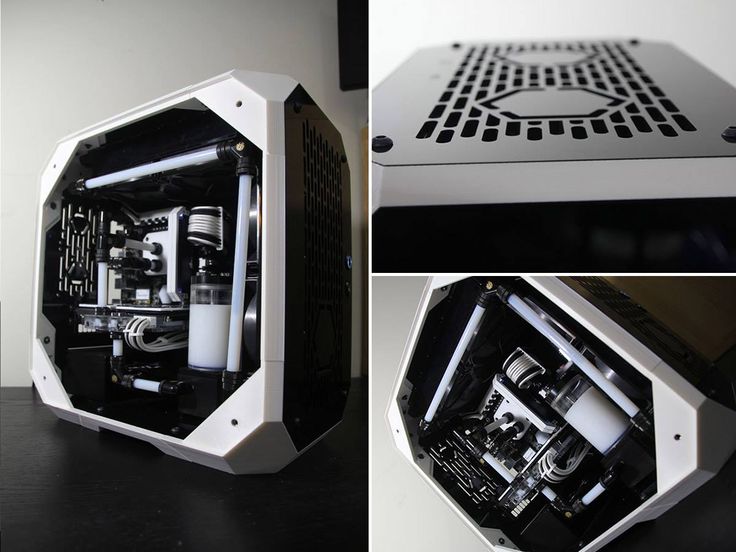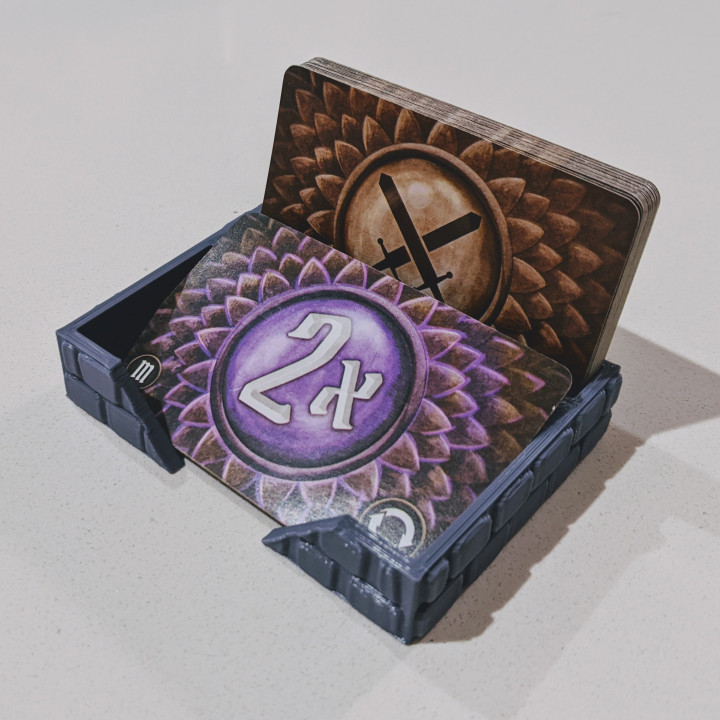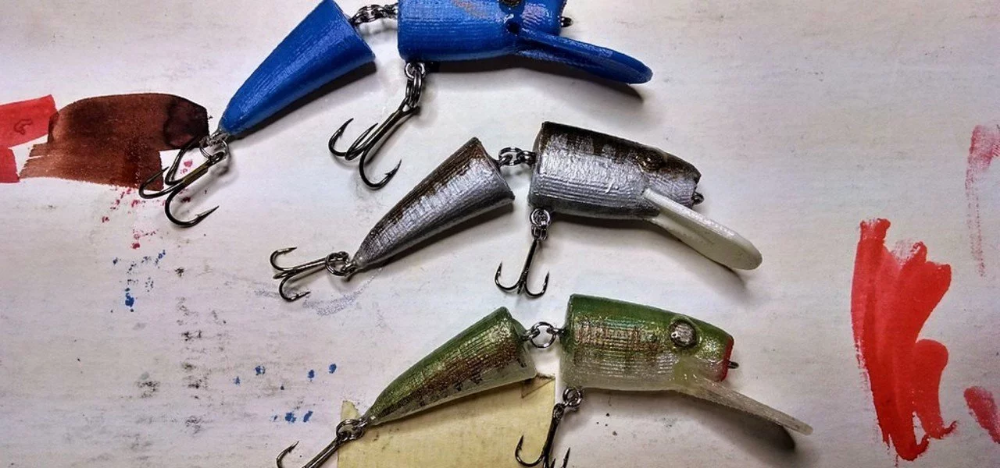3D printer use cases
25 (Unexpected) 3D Printing Use Cases
For years, hype around 3D printing captured audiences in the mainstream press. With visions of a future including a 3D printer in every home, these predictions were light on details and ultimately most did not come to fruition. However, the possibilities of 3D printing were undeniable, despite the youth of the technology and the relatively low number of use cases that were viable in the past.
The initial hype masked legitimate and growing business applications for 3D printing. With a proliferation of high-performance desktop and benchtop machines being introduced into the market, we are now seeing a broader variety of businesses expanding their product offerings and delivering better results to customers.
What can you do with a 3D printer? Read on to discover 25 (often unexpected) 3D printing use cases that show the broad scope of possible applications for the technology.
Report
A new industry report that compares how recent and early adopters are using 3D printing for their business, and explores future trends of the technology.
3D printing can add enormous value to supply chains, unlocking a broad spectrum of production applications. The technology is growing more workable and affordable, with companies able to bring additive manufacturing in-house to support processes on the factory floor. New, resilient 3D printing materials are opening opportunities for the production of high precision, functional 3D prints that can stand in for final parts, offering customization opportunities that help designers radically push the boundaries of high-performance cars. Industrial design studio Vital Auto has put all of this technology to work creating high-fidelity prototypes and concept cars, rapidly working through iterations using a variety of advanced tools, including a large fleet of in-house 3D printers.
“We've used 3D printing from day one. We wanted to introduce it to our manufacturing processes, not only to reduce costs, but to give the customer more diversity with their designs and their ideas,” said Design Engineer Anthony Barnicott.
The automotive industry has seen the value additive manufacturing can add to multiple touch points in the creation of automobiles. This means going well beyond rapid prototyping to include:
- Creating custom, complex, and high-performance parts
- Producing tooling and manufacturing aids
- Manufacturing replacement parts and spare parts on demand
- Cutting costs and lead times by up to 90% compared to outsourcing
See How Concept Cars Are Created
Recent advancements in 3D printing technology have started to fundamentally change the audio industry, meaning that digital printing of custom fit ear devices for the audiology, noise protection, and consumer audiology industries has never been so affordable. In recent years, 3D printing manufacturers have brought skin-safe biocompatible materials to market, allowing for in-house production of ear models and headphone tips.
Custom fit offers a unique individual listening experience built around the earphone fitting exactly in the customers ear.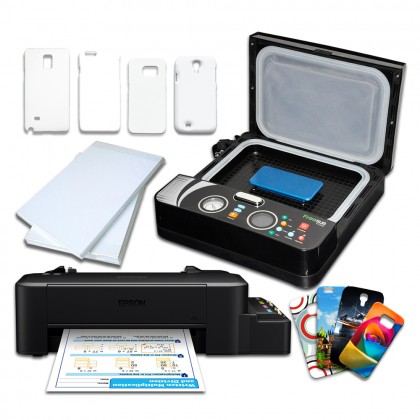 This gives a secure fit that removes any possibility of earphones falling out of the ear, in addition to improved comfort and noise isolation.
This gives a secure fit that removes any possibility of earphones falling out of the ear, in addition to improved comfort and noise isolation.
“We are very excited about the concept of custom fit to deliver a custom experience to further enhance immersive listening. Formlabs shares Sennheiser’s drive for innovation – and improving the customer experience through this prototype is a testament to that mindset.”
Sennheiser Director AMBEO Immersive Audio, Veronique Larcher
The challenges that come with customized manufacturing can be overcome through the combination of Formlabs' disruptive printing technology and mobile scanning coupled with machine learning. This means customers can have easy access to custom fit earphones, with lead times reduced from four days to next day delivery or even same day.
Learn More About 3D Printing in Audiology
restor3D tools being printed, along side their final form.
Ten years ago, few people were talking about the huge impact 3D printing would have on the medical industry, from helping create advanced medical devices to patient-specific surgical guides. One company no one saw coming was restor3d, who leverages 3D printing capabilities to drastically improve surgical care by printing procedure-specific polymer instrumentation tailored to cervical spine implants.
One company no one saw coming was restor3d, who leverages 3D printing capabilities to drastically improve surgical care by printing procedure-specific polymer instrumentation tailored to cervical spine implants.
With a fleet of over 25 Formlabs 3D printers in its production line, restor3D is already printing the next generation of surgical tools. For surgeons using these tools, this procedure-specific, single packed sterile instrumentation system results in:
- Replacement of large, expensive surgical trays.
- Ability to iterate designs and quickly introduce new tools or features based on surgeon preferences.
- Dramatic reduction of supply chain and sterilization costs for hospitals.
Read How restor3d Is Creating Next Generation Tools
As much as 3D printing technology has developed in the past few years, there are even more high-impact, use cases currently in development. 3D printed organs is one of them.
Being able to easily create new organs has for decades been a dream for scientists working in regenerative medicine. While it remains in its early stages, the use of the 3D workflow to produce organic tissue eligible for transplant is bearing early fruit.
While it remains in its early stages, the use of the 3D workflow to produce organic tissue eligible for transplant is bearing early fruit.
Dr. Sam Pashneh-Tala from the University of Sheffield is leading the way. His research uses high-precision desktop stereolithography (SLA) 3D printing to enable the production of tissue-engineered blood vessels with a variety of geometries. This will allow for patient-specific vascular graft designs, improved surgical options, and provides a unique testing platform for new vascular medical devices for those suffering from cardiovascular disease—which is currently the number one cause of death worldwide.
“My differentiator is that I’m able to create blood vessels with geometries that are more closely matched to those found in the body. This offers the potential for improved surgical options and even patient-matched blood vessel designs. Without access to high-precision, affordable 3D printing, creating these shapes would not be possible, ” said Dr.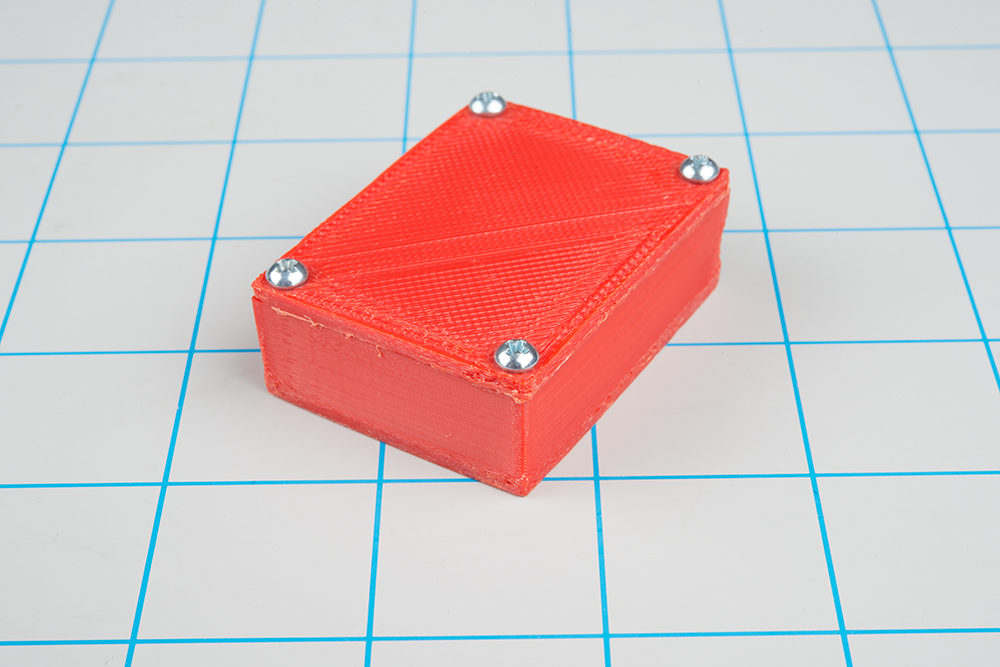 Pashneh-Tal.
Pashneh-Tal.
Read About Tissue Engineering
The reconstruction of the three cities in the two different time periods consisted of over 650 segments, which were printed using Formlabs White Resin, each measuring 12x12cm.
As an industry already based on geometric design, prototyping, and modeling, architecture stands to gain enormously from advances in 3D printing technology.
On top of saving time during model production, the 3D printed models allow architects to anticipate the effects of certain design features with much greater certainty, e.g., by seeing a model produced with a fuller complement of materials, an architect can measure aspects such a light flow through the structure with higher precision.
But 3D printing’s use case goes beyond a single model: some firms are recreating entire towns. Institute of Architecture at the Hochschule Mainz - University of Applied Sciences. The result is an extraordinary exhibition that showcases six large-scale models of the cities, in the years 800 and 1250 AD.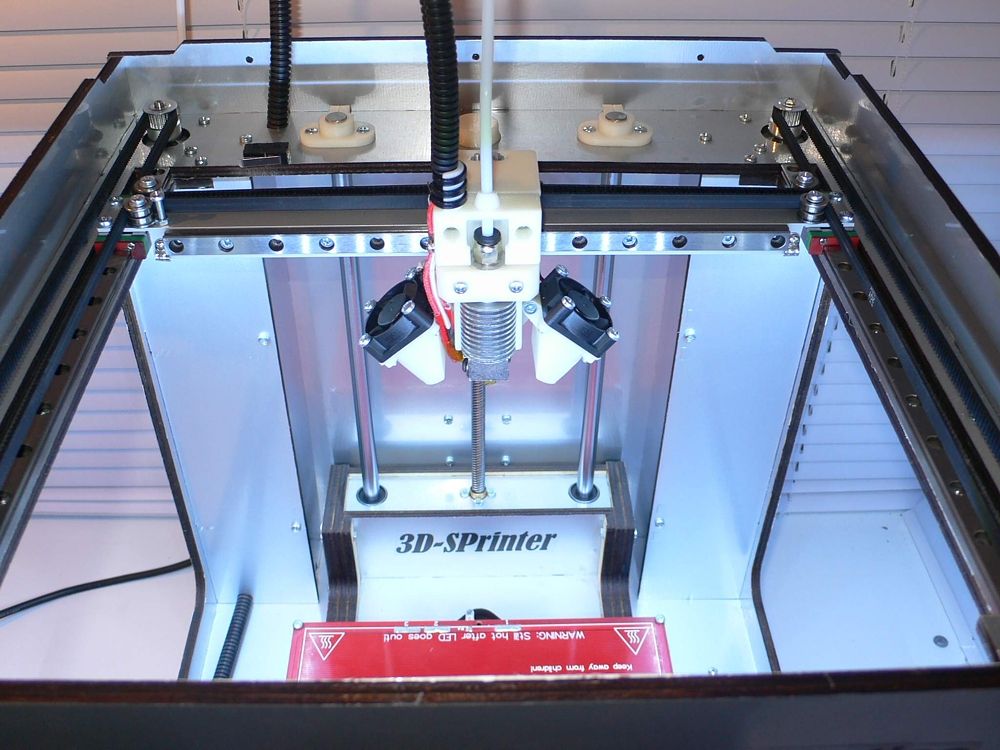 The models consist of over 650 parts, all of which were created using SLA 3D printing technology.
The models consist of over 650 parts, all of which were created using SLA 3D printing technology.
Learn About the Reconstruction of Medieval German Cities
The 990S TripleCell and the FuelCell Echo Triple.
The sport-footwear industry has long relied on technology to optimize the performance of their products, and with the digital workflow they have more options than ever in customization.
Large brands like New Balance, Adidas, and Nike, having recognized the power of additive manufacture, intend to mass produce custom midsoles made from 3D printed materials. As in other industries, the digital workflow will augment traditional methods of manufacture here—critical, highly-customized components of each product will be entrusted to the 3D printing, and the rest left to traditional means.
Given the unique properties required for footwear, New Balance worked with Formlabs to create a custom printing material which could resist the daily wear and tear faced by an athletic shoe.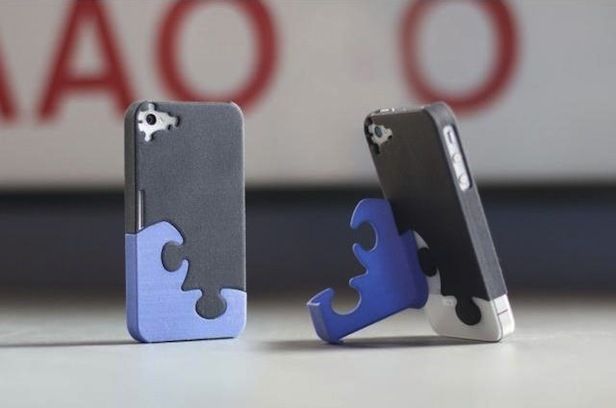 Shoe materials experience a variety of environments, with the additional need to withstand various levels of pressure thousands of times per day. Designed to create springy, resilient lattice structures, Rebound Resin has a much higher energy return, tear strength, and elongation than any other Formlabs material. Rebound Resin is strong enough to be used in gaskets, seals, and automotive interiors, but light and flexible enough for the sole of a shoe.
Shoe materials experience a variety of environments, with the additional need to withstand various levels of pressure thousands of times per day. Designed to create springy, resilient lattice structures, Rebound Resin has a much higher energy return, tear strength, and elongation than any other Formlabs material. Rebound Resin is strong enough to be used in gaskets, seals, and automotive interiors, but light and flexible enough for the sole of a shoe.
“One of the things that’s really exciting for us is that it provides a very different experience for the runner.”
Katherine Petrecca, General Manager of Footwear at the Innovation Design Studio, New Balance
See the 3D Printed New Balance Shoe
3D printing has already been integrated into the production of Hollywood films and is widely used for practical visual effects and costuming.
Whereas the creation of film's most fantastic creatures once required meticulous handcraft, the increased deadline pressure and time demands of modern moviemaking have made a quicker method of creating practical effects vital.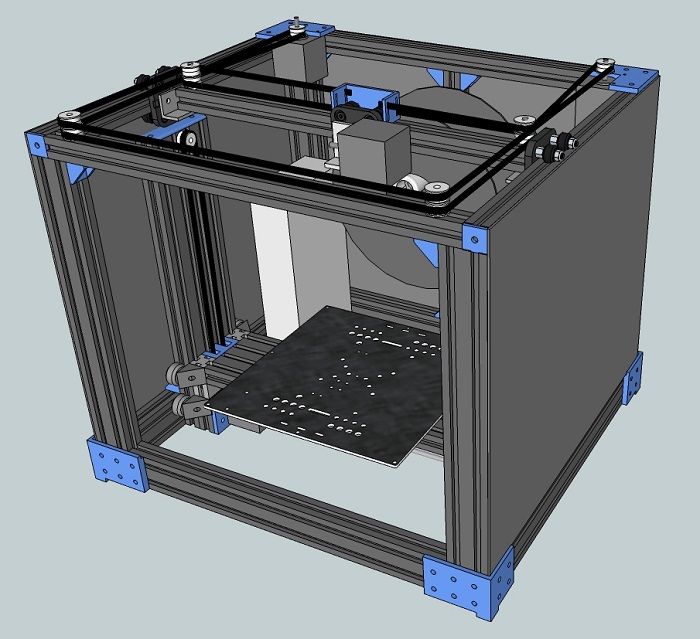 Effects studios like Aaron Sims Creative now use a hybridized approach, practical effect-making enhanced by the digital workflow, to create new opportunities for collaboration and cut lead times on bringing ideas to life.
Effects studios like Aaron Sims Creative now use a hybridized approach, practical effect-making enhanced by the digital workflow, to create new opportunities for collaboration and cut lead times on bringing ideas to life.
“The Demogorgon was one of the first prints that we did using our Formlabs 3D printers, and we were amazed. Before that, we had always outsourced printing. So to be able to grow it in-house, and see a design that we helped create from the very beginning printed right in front of us, was kind of an amazing thing. It was like going back to the days when we used to sculpt with clay,” said Aaron Sims.
Read About How Aaron Sims Creative Builds Their Worlds
3D printing's artistic potential is not limited to physical artwork. It also has the power to bring entirely new dimensions to forms like dance and music. Given the design freedom inherent in 3D printing, even the most complex or unique instruments can be modified or created from scratch, at a fraction of the price of traditionally made instruments.
Having been around for centuries and barely changing, the violin’s form is recognizable to all. Violin music has evolved to such a high level that the instrument has attained an almost legendary status in our culture. But Formlabs engineer Brian Chan challenged himself to create a fully-functional acoustic violin, using a 3D printer and Formlabs White Resin.
Get an Inside Look at Design Process
3D scanning, CAD, and 3D printing have been used to restore the works of some of history's most famous artists, returning works by the likes of Michelangelo and da Vinci to their former glory.
Art restoration projects can be enhanced by combining 3D printing and 3D scanning, two powerful technologies that allow builders to take physical objects, turn them into three dimensional shapes, make changes or restorations, and re-print the parts.
Mattia Mercante uses 3D replication to replace lost pieces of sculptures and fine artworks at the world-renowned Opificio institute in Florence, allowing museum visitors to experience the art as the artists intended.
For one 17th-century reliquary, Mercante scanned intricate frame details from elsewhere on the piece using an HP 3D Structured Light Scanner, and then replicated the missing pieces on a Formlabs 3D printer. The prints were painted to appear identical to the original decorations. Best of all, the restoration required minimum CAD modeling, and was fast and affordable compared to hand craft.
Learn More About Art Restoration
3D printing has as much potential utility in reconstruction as it does in production. The work of a forensic artist is often made difficult by incomplete evidence. Digital technologies can be of tremendous use in legal investigations and can augment the abilities of forensic artists to reconstruct accurate models of persons of interest or victims.
The digital workflow here involves turning CT scans into 3D prints to aid in identification. For instance, when investigators find just part of a skull as evidence, a printer can model and replicate the complete sample.
Reconstructions of the appearance of crime victims have already played a key role in attaining justice, proving once again the utility of 3D printing beyond considerations of design and productive efficiency.
Just like 3D printing can be used for preoperative planning, CT scans of crime victims can help detectives get up-close to bones. Digital CT scan and X-ray data of remains can be used to produce 3D-printed replicas of various body parts. Then, the pathologist can determine the full circumstances of a crime, from the number of participants to the nature of the weapon used.
Learn More About Solving Crime
3D printing's impact is not limited to improving workflows or enabling rapid prototyping. It can also change lives directly. With 30 million people worldwide in need of artificial limbs and braces, there is hope that 3D printing can provide new solutions where cost and specification have traditionally been hurdles.
3D printing can provide an affordable alternative that, like many related advances in medicine, can provide therapy that is much more closely tailored to a patient's needs. The affordability and customizability of 3D printing techniques can profoundly alter the quality of life for the better for those suffering from injury or disability, as we saw in this story of a father and son.
The affordability and customizability of 3D printing techniques can profoundly alter the quality of life for the better for those suffering from injury or disability, as we saw in this story of a father and son.
We saw this type of innovation first hand with Matej’s and Mateja’s son Nik, who was suffering from cerebral palsy. Matej set out with a simple goal: to enable Nik to walk. Months of research and development followed, resulting in a custom-made, 3D printed orthosis that provides support and correction exactly where Nik needs them, which finally helped him take his first steps independently. Watch the full video above and read their story.
Beyond prosthetics which return lost function to a user’s body, it is possible to 3D print devices which are, in some ways, even better than the limbs they are replacing. With 3D printing, this is no longer a future possibility about bionetic, robo-cop like body parts, but part of the latest in cutting-edge prosthetic production. Some firms, such as Psyonic, are already delivering advanced prosthetics.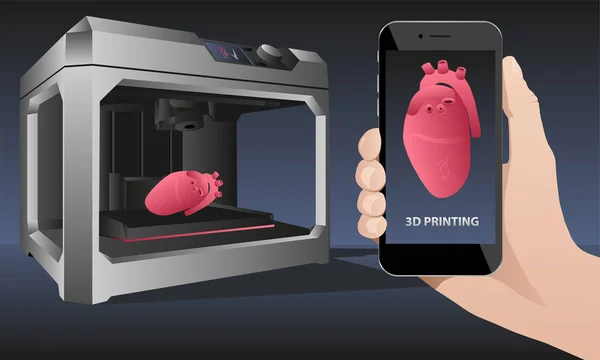
Arm Wrestling With A Bionic Hand
Maybe people think of 3D printing as producing smaller items which you can hold. In recent years, firms have been exploring manufacture-scale additive workflows that can produce much larger functional components. In the last few years, various initiatives have gotten underway to create houses and larger structures that are entirely the product of 3D printing, opening new frontiers in sustainable living and construction.
3D printing technique gives freedom of form to architects, even with previously less malleable building materials like concrete. More broadly speaking, it allows fully sustainable and energy-efficient homes to be built that also meet modern comfort standards. Construction by this means could be entirely waste-free, as well as less expensive and environmentally costly as traditional methods.
While you will not be moving into a 3D printed house on the near horizon, you can experience 3D printed construction projects today.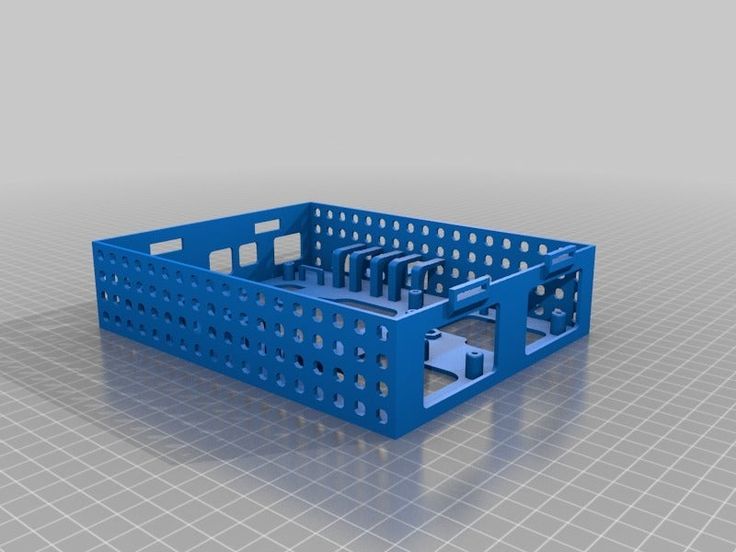 The MX3D Bridge in Amsterdam is currently open to foot traffic. According to dezzen.com, the “structure used 4,500 kilograms of stainless steel, which was 3D-printed by robots in a factory over a period of six months before being craned into position over the canal this year.”
The MX3D Bridge in Amsterdam is currently open to foot traffic. According to dezzen.com, the “structure used 4,500 kilograms of stainless steel, which was 3D-printed by robots in a factory over a period of six months before being craned into position over the canal this year.”
Source: www.dezeen.com
Read More About the 3D Printed Bridge
With one of the highest barriers-to-entry of any industry in the world, space travel is ripe for 3D printing innovation. Lowering prototyping costs for expensive, space-specific tools and machines will lower costs and allow smaller companies to help innovate in space.
Aerospace startup Relativity has tested the creation of aluminum rocket engines using additive manufacturing. If successful, this application would sharply reduce the costs and practical difficulties of space travel, opening up the field to new business and to a vast potential for growth.
Masten Space Systems is another changemaker for 3D printing in the aerospace industry: founded in 2004, the company specializes in vertical takeoff and vertical landing rocketry. The company is launching a mission to the moon in 2022 as part of the NASA Commercial Lunar Payload Services (CLPS) Project. Using Formlabs 3D printers, Masten produced plastic rocket engines for R&D testing.
The company is launching a mission to the moon in 2022 as part of the NASA Commercial Lunar Payload Services (CLPS) Project. Using Formlabs 3D printers, Masten produced plastic rocket engines for R&D testing.
The company has experience in 3D printing in both plastics and metals--they’ve even helped develop new custom metals for their NASA Tipping Point project. “We really like 3D printed rocket engines because they enable you to do a lot of things that you can't do in a traditional manufacturing process. In our goal to drive down costs and increase our effectiveness, we started looking at how we could use the Stereolithography printers, particularly once Ceramic Resin and High Temp Resin were released. Those have some rather attractive engineering properties for seeing if we could actually use them in a rocket,” Matthew Kuhns, chief engineer at Masten, said.
Formlabs’ High Temp Resin and Rigid 10K Resin are examples of materials with optimal engineering properties for aerospace applications. High Temp Resin is designed for functional prototyping in high heat applications while Rigid 10K Resin is the stiffest material in our engineering portfolio, making it suitable for industrial-grade prototypes.
High Temp Resin is designed for functional prototyping in high heat applications while Rigid 10K Resin is the stiffest material in our engineering portfolio, making it suitable for industrial-grade prototypes.
Read More About Masten Space Systems
Origin Labs, within the Innovation Hub, will have a space dedicated to 3D printing for students and the broader community.
Most institutions of higher education are focused on preparing their students for the workforce of the future. The Pennsylvania State University is focused on the current workforce as well and has recently invested millions of dollars into building the Eric J. Barron Innovation Hub, which serves the public as well as the University community.
The Appalachian mountain range in western and central Pennsylvania has historically been the center of the nation’s coal mining industry, and enjoyed a solid and prosperous economy in the first half of the twentieth century because of it. As global and domestic economies shifted away from coal, the Appalachian region suffered, with a higher rate of joblessness and one of the lowest household income rates in the country, as reported by the Appalachian Regional Commission.
Over the last two decades, leadership at the local and state levels have sought to change that through investments in manufacturing, education, and technology. The Appalachian Regional Commission offers $1 million grants to “support educational opportunities and institutions, especially by connecting skill development and workforce training with local and regional business interests and opportunities.”
As additive manufacturing rapidly expands in a wide range of businesses (as seen in this blog post!), hiring managers are looking for employees trained in working in digital spaces and fluent in CAD. Universities are looking to address this market lead by creating large and well funded innovation hubs.
See the Investment the Pennsylvania State University is Making
Besides training tomorrow’s workforce in CAD and 3D printing, universities are starting to see the benefits of deploying 3D printers across a wide range of educational disciplines.
At UMass Lowell, that meant modernizing its sculpting and 3D design courses for the 21st century.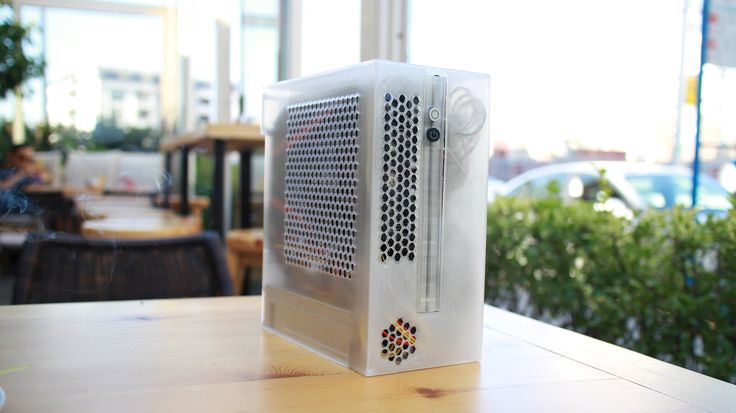 Enter Yuko Oda, who joined the university in 2017 and got started by ordering a multitude of 3D printers, including a Formlabs SLA machine.
Enter Yuko Oda, who joined the university in 2017 and got started by ordering a multitude of 3D printers, including a Formlabs SLA machine.
Yuko is able to take her passion for art and technology into the classroom, currently teaching sculpture, 3D modeling and animation, and interactive media. Most students know that they’re required to understand 3D animation and 3D modeling for future careers in various fields, including sculpture design for cinema. For studio artists, 3D modeling has become an essential skill.
“Students sculpt a 3D model, import it into Zbrush, then print in various resins, including Clear Resin. The ability for Formlabs machines to show intricacies that were modified in Zbrush is unparalleled when compared to other printers in the lab.”
Yuko Oda
One of the most promising new developments in sculpture is the integration of 3D printing and Virtual Reality (VR). This is especially salient for students intimidated by 3D design. VR is rapidly reducing barriers for 3D design, allowing artists and students to create with their hands in programs such as Oculus Medium. Yuko has taught 8th graders how to create a 3D object in 30 minutes in VR, and then print the artwork on a 3D printer. Even for seasoned sculptors, VR reduces the time it takes to go from an idea to a physical object, potentially opening up new areas of experimental art.
VR is rapidly reducing barriers for 3D design, allowing artists and students to create with their hands in programs such as Oculus Medium. Yuko has taught 8th graders how to create a 3D object in 30 minutes in VR, and then print the artwork on a 3D printer. Even for seasoned sculptors, VR reduces the time it takes to go from an idea to a physical object, potentially opening up new areas of experimental art.
Learn How How UMass Lowell Integrates Art and Technology
While caretakers at ZooTampa were performing a routine check-up on a 25-year-old great hornbill, they found a lesion at the base of the bird’s casque, the yellow helmet-like growth on top of the head. Further examination determined that the bird, named Crescent, was suffering from life-threatening cancer.
The cancer, located near the bird's skull, couldn't be removed because it housed part of the bird's sinuses. The team wanted to know if they could remove the casque, and replace it with a 3D printed replica designed specifically for this bird. Patient-specific prosthetics and devices have been used before in human procedures, but never for a great hornbill. Would it be possible, and if so, which materials would be safe for the bird?
Patient-specific prosthetics and devices have been used before in human procedures, but never for a great hornbill. Would it be possible, and if so, which materials would be safe for the bird?
ZooTampa says the successful 3D-printed “replacement beak,” was created using BioMed White Resin. This material is an opaque white material for biocompatible applications requiring long-term skin contact or short-term mucosal contact. Special among Formlabs SLA 3D printing materials, this medical-grade material is validated for short-term tissue, bone, and dentin contact.
3D Printing and Veterinary Medicine
During the COVID-19 pandemic and following supply chain crises of 2021/22, many firms turned to 3D printing to help keep machines online and products rolling off the factory floor. The expanded use of in-house 3D printing to create end-use parts, such as replacement parts for machines, has made additive manufacturing a key tool to address supply chain problems.
Formlabs commissioned the 2022 3D Printing Applications Report to better understand what, if anything, has changed recently among 3D printing users. The report demonstrates the shift in attitudes around 3D printing from an R&D and prototyping tool to an invaluable manufacturing technology needed to meet evolving consumer preferences and overcome supply chain challenges. Whether working to ease supply chain constraints, creating limited run products, or personalizing devices, businesses have been forced to rethink how they produce goods to meet customer demand.
The report demonstrates the shift in attitudes around 3D printing from an R&D and prototyping tool to an invaluable manufacturing technology needed to meet evolving consumer preferences and overcome supply chain challenges. Whether working to ease supply chain constraints, creating limited run products, or personalizing devices, businesses have been forced to rethink how they produce goods to meet customer demand.
End-use parts printed on the Fuse 1.
An IR sensor purge printed on the Fuse 1 in Nylon 12 Powder.
Building 3D printers is always an engineering challenge. Packing industrial-grade performance into an affordable, sleek desktop machine requires years of engineering and design work. This was especially true of Formlabs’ much anticipated selective laser sintering (SLS) 3D printer, the Fuse 1.
One of the tools Formlabs engineers used to prototype parts was the Fuse 1 itself. But the use of 3D printing didn’t stop at prototyping. Today, every single Fuse 1 unit shipped to customers contains multiple production parts printed directly on a Fuse 1 using Nylon 12 Powder.
Using the Fuse 1 SLS printer to prototype and create end-use parts offered three main advantages, according to Seth Berg, the engineer program manager overseeing the Fuse 1:
- The design freedom to create complex parts without internal support structures.
- Reducing supply chains by prototyping and creating end-use parts in-house.
- Eliminating outsourcing to achieve an affordable solution for small-batch production with a proven, versatile Nylon 12 material.
To see how the team did this, and which end-use parts on the 3D printer and 3D printers, watch the video below.
In May of 2020, Forbes ran an article titled: How 3D Printing Test Swabs Will Help Fulfill America's Shortage. They noted that the 3D printing industry has come together to tackle the COVID-19 swab shortage head on, with Formlabs, HP, Origin, Carbon, Desktop Metal and more working to ramp up swab production.
The impact of the COVID-19 pandemic required a global, concerted response. Through collaborating with USF and Northwell, Formlabs enabled a solution that has been deployed worldwide. With the accessible design, affordable equipment, and validated processes, the swab design enabled over forty million COVID tests in twenty five countries. Over the last year, Formlabs 3D printers have continued being used by governments and healthcare providers to improve patient testing and care. This global solution is just one example of how the agility of 3D printing can benefit the public good.
Through collaborating with USF and Northwell, Formlabs enabled a solution that has been deployed worldwide. With the accessible design, affordable equipment, and validated processes, the swab design enabled over forty million COVID tests in twenty five countries. Over the last year, Formlabs 3D printers have continued being used by governments and healthcare providers to improve patient testing and care. This global solution is just one example of how the agility of 3D printing can benefit the public good.
We saw this happen dramatically in Singapore, where Eye-2-Eye Communications ramped swab production to over 30,000 swabs per day to help keep the city safe.
“It has not only been an excellent opportunity to showcase the advantages of 3D printing for rapid design and development but it has also shown Formlabs effectiveness in being able to mass produce products in very short timeframes. Also, as we see spikes in cases across the globe it is reassuring to know we can scale our production relatively easily to meet demand if required,”said Chief Executive Officer of Eye-2-Eye Communications, Miles Podmore.
One controller with buttons printed on the Fuse 1 (left), and another with buttons injected molded (right).
One problem with creating custom aftermarket parts is these orders are typically low volume, and need to evolve in response to product updates by the original manufacturers. But with the rise of in-house 3D printing, custom manufacturing has sprouted in multiple industries.
Battle Beaver Customs is focused on delivering a premier gaming experience through custom gaming controllers. Their modifications make the controllers more responsive and more competitive, allowing players to increase their gaming potential and reach peak performance across a range of games. Rapid prototyping with the Fuse 1 SLS 3D printer allows Battle Beaver Customs to quickly change their mount and button designs. When building custom consumer products, quick turnaround times can pay dividends for businesses looking to stay ahead of their competitors. According to Head of Research and Design at Battle Beaver Customs, Michael Crunelle, the “Fuse 1 has been great for being able to make changes quickly, from concept to end-use part. Our competitors can’t keep up with us."
Our competitors can’t keep up with us."
JetBoatPilot, a marine parts and accessories manufacturer, has built a reputation as an authority in the industry by creating aftermarket products that improve the performance and low speed handling of jet powered boats.
JetBoatPilot utilizes the Form 3 SLA and Fuse 1 selective laser sintering (SLS) 3D printers to prototype and manufacture aftermarket parts. A newly designed and now top performing product, the Lateral Thruster 2.0, was designed and manufactured on the Fuse 1. Equipped with the Fuse 1 and Nylon 12 Powder, JetBoatPilot was able to cut costs by 6x compared to their previous manufacturing methods.“I probably would have made that (aluminum version) retail price somewhere in the $400 dollar range, maybe even $600 dollar range, if I really had pushed it. I wouldn't have sold nearly as many at $600. But now I'm selling it for $199 and the customer is happy as they can be. And I'm twenty times the cost of goods,” says JetBoatPilot founder Will Owens.
With 928 stores spanning across 48 countries, Lush Cosmetics is a retailer known globally for making creative and crowd pleasing products such as Massage Bars, Body Butters, Bath Bombs and more, attributes its success to being able to respond quickly to trends and customer demand.
To bring new, industry defining, highly-detailed cosmetics to life, Lush needed to turn to 3D printing for much more than prototyping new shapes. They’ve invested in a next-generation additive manufacturing center for mold creation, tooling, and end-use parts.
The Lush Cosmetics team vacuum forms using 3D printed molds in-house.
“We use our Formlabs 3D printers for a mix of mold creation, custom tooling, and end-use parts. We’re a reactive business and having this capability in-house means we don’t need to share designs externally as we own everything in the product development process,” said Damien Carter, Innovation Lab Manager at Lush Cosmetics.
See How Lush Cosmetics Operates
3D printing is unleashing new possibilities and business opportunities, such as mass customization.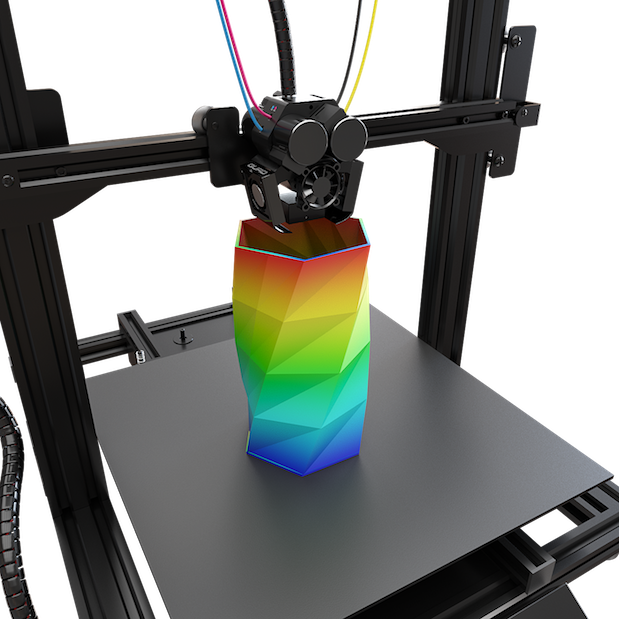 What used to be too complex, prohibitively expensive, or impractical to produce with traditional methods is available at no extra cost with digital technologies, giving full control to designers and opening the door for fully customizable consumer products to become a reality.
What used to be too complex, prohibitively expensive, or impractical to produce with traditional methods is available at no extra cost with digital technologies, giving full control to designers and opening the door for fully customizable consumer products to become a reality.
A good example of this is Gillette’s Razor Maker™, which gives customers the opportunity to customize the handle of their razor by picking various designs, colors, or adding custom text.
“For Gillette, piloting Razor Maker™ represents a crucial step in our customization journey where new technology and new business models must come together in order to deliver products that are as unique as our consumers,” said Donato Diez, global brand manager for Gillette and Razor Maker™
Learn How Gillette Uses 3D Printing to Unlock Consumer Personalization
White Paper
This guide will provide manufacturers with insights into the different approaches to customization, how to choose the most applicable approach, and more.
Download the White Paper
Dentistry has also been one of the most prominent drivers of 3D printing investment, desktop 3D printers are an increasingly common sight in dental labs and practices. As a matter of fact, the popular clear aligners, thermoformed on 3D printed molds, are possibly the single most successful use of 3D printing we've seen to date.
Over the past ten years, 3D printing has so advanced in dental that now no new dental labs are opening without using some form of digital dentistry. With materials so good they can 3D print permanent crowns, full dentures, and more.
3D printing technologies thrive in an environment where our unique bodies require custom solutions. As a result, the dental industry is going through a rapid digital transformation with digital workflows bringing increased efficiency, consistently high quality, and lower costs to dental labs and practices.
Five Ways 3D Printing Has Redefined the Dental Industry
Next time you’re out for a night on the town, keep your eyes peeled for our next unexpected 3D printing use-case: 3D printing is coming to custom glasses frames.
Marcus Marienfeld AG set themselves apart from conventional glass frames, using different and unique production techniques to create their frames. Recently they started integrating selective laser sintering (SLS) 3D printing into the production line for frames in their Swiss workshop for printing end-use parts and rapid tooling for forming titanium.
“You get very inventive and imaginative when you have a 3D printer in-house. I can do things with little effort that I wouldn't otherwise try," said Marcus Marienfeld.
See the 3D Printed Glasses
Visualizing 3D printing-driven changes in the way things are made does not require the feats of imagination it once did. As workflows have developed over the last several years and gained footholds in various industries, we are beginning to see that revolutionary potential demonstrated.
From dentistry and across healthcare to consumer goods, architecture, and manufacturing, the public is interacting more and more with the end products of 3D printing.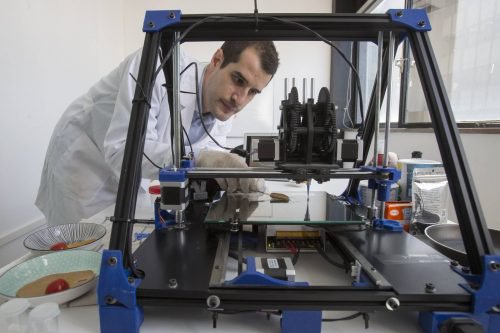 Making custom parts cost-efficient, cutting lead times and overheads, and empowering customers by bringing them closer to the products they want—we can only expect the influence of 3D printing to continue expanding.
Making custom parts cost-efficient, cutting lead times and overheads, and empowering customers by bringing them closer to the products they want—we can only expect the influence of 3D printing to continue expanding.
Explore Formlabs 3D Printers
25 Common and Unexpected 3D Printing Use Cases
Several years ago, the hype around the 3D printing industry seemed deafening. Commentators declared the arrival of a new technology capable of revolutionizing industries across the board, from medicine to product development to manufacturing. The possibilities were undeniable, despite the youth of the technology and the relatively low number of use cases that were viable at that point.
Since that early hype cycle, 3D printing processes have matured steadily, and we’ve now begun to see 3D printing tools, once accessible only to a few high-tech industries, made available to a broader variety of businesses.
3D printing, also known as additive manufacturing, creates three-dimensional components from CAD models. It mimics the biological process, adding material layer by layer to create a physical part. With 3D printing, you can produce functional shapes, all while using less material than traditional manufacturing methods.
It mimics the biological process, adding material layer by layer to create a physical part. With 3D printing, you can produce functional shapes, all while using less material than traditional manufacturing methods.
The result of the wider availability of 3D printing is that a huge number of industries are beginning to feel the disruption. As the 3D printing workflow empowers both individuals and organizations to take control of their own design and manufacturing processes, more and more use cases are springing up.
The automotive industry has been tapping the potential of 3D printing for decades already. 3D printing is extremely useful in rapid prototyping and has proved capable of significantly reducing design times and lead times on new car models.
3D printing has also augmented manufacturing workflow within the industry. Custom jigs, fixtures, and and other tooling that might be required for a single car part, particularly when high-performance machines are concerned, once required an array of custom tools, adding cost and making the process as a whole more and more complex.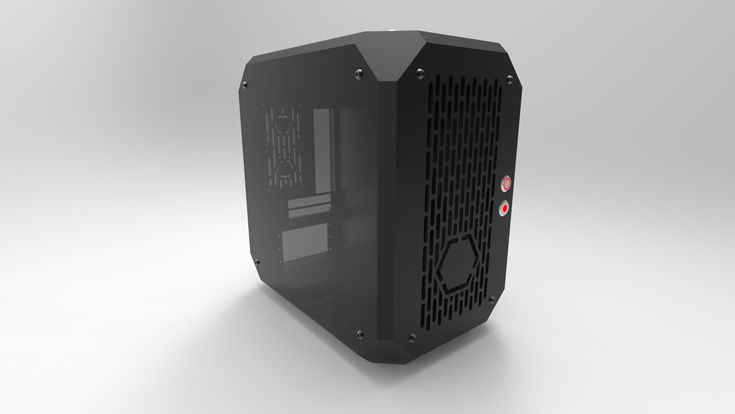
With 3D printing, custom jigs and other low volume parts can be created directly for the production line. Manufacturers can cut lead times by up to 90% and lower risk with the integration of 3D printing processes. Through streamlining with in-house production the manufacturing process as a whole grows more efficient and more profitable.
At a production facility of Pankl Racing Systems, engineers use 3D printed custom jigs in motorcycle gear manufacturing.As the quality of the digital workflow continues to increase, as materials get better and processes more affordable, we will see more and more 3D printed parts in cars, increasing the scope for design customization and resulting in better performance. A little further down the line still, but some companies are already working on fully 3D printed cars.
Urethane Cast Auto Parts With Water Transfer Printed Carbon Fiber Pattern
3D printing is instigating a design revolution in jewelry. Creating 3D printed pieces that had a comparable look and feel to traditionally handcrafted and cast jewelry used to be a challenge. However, following the latest round of advances in specialist high-end 3D modeling programs, and with more printable materials on offer, more and more jewelry designers now prefer to 3D model and print their designs over traditional handcrafted methods.
However, following the latest round of advances in specialist high-end 3D modeling programs, and with more printable materials on offer, more and more jewelry designers now prefer to 3D model and print their designs over traditional handcrafted methods.
Jewelry 3D printers create pieces from resin or wax, based on the 3D model of the jeweler’s design. Digital models can be easily edited, which makes prototyping jewelry with 3D printing incredibly cheap and convenient.
The buying experience is made more tactile as a result—clients can now try on prototypes of pieces they have helped design to ensure it looks and feels just right before purchasing.
The final designs can then be 3D printed and cast in a mold using the same workflow as with traditional jewelry. The results can be stunning:
Jewelry pieces casted using 3D printed pattern produced with stereolithography (SLA) 3D printing technology.With the digital workflow complementing traditional production methods, and more new designers entering the workshop equipped with CAD/CAM skills, custom jewelry is rapidly becoming more accessible, enabling jewelry makers and retailers to forge closer relationships with their customers.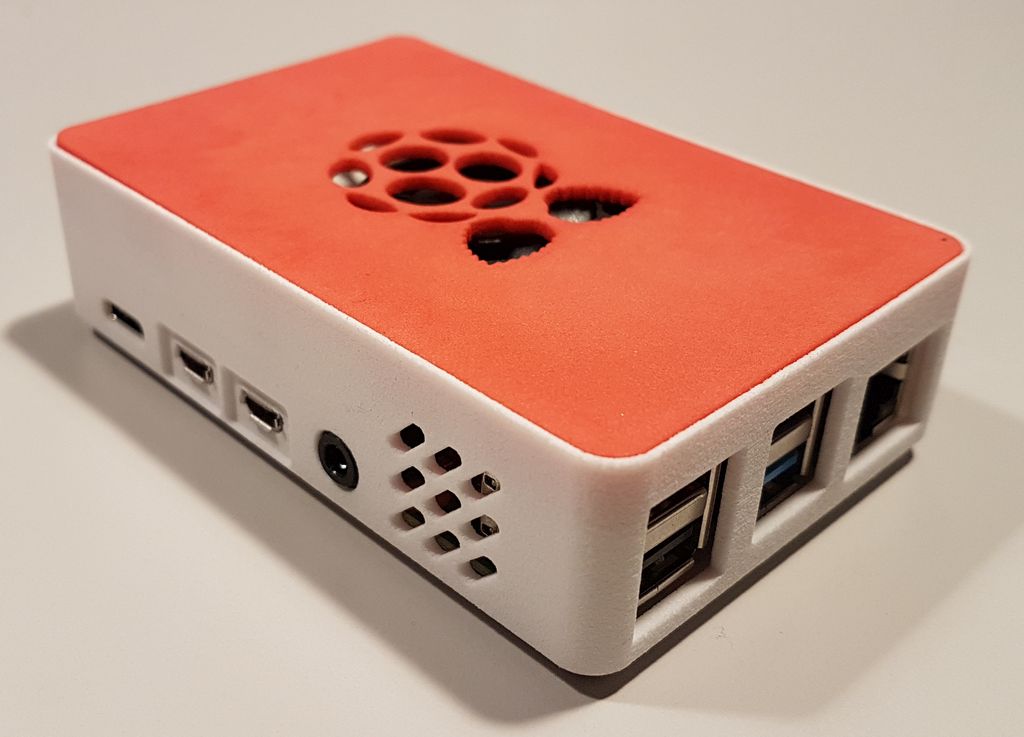
DLP 3D Printed Wax Pattern Models for Casting
Anything with so much power to alter design and production methods as 3D printing is bound to make waves in manufacturing. But there are potential advantages to embracing 3D printing in this field that are harder to visualize.
One of these is the onshoring of manufacturing. In recent decades, there has been a pronounced decline in US manufacturing as firms moved operations overseas to take advantage of the lower cost of labor. The commercial sense in this move is undeniable, as “a tool made in China or Vietnam can cost anywhere from $10,000 to $50,000 less than a tool made in the US.”
Offshoring, nevertheless, has its drawbacks on the design and production process. Lead times are frequently long, importing products from overseas is costly and environmentally unfriendly.
3D printing, with its ability to produce more complex designs, has the potential to turn onshoring back into an attractive prospect. Its usefulness to the design process, capacity to improve lead times dramatically and raise efficiency, all make in-house production feel viable again.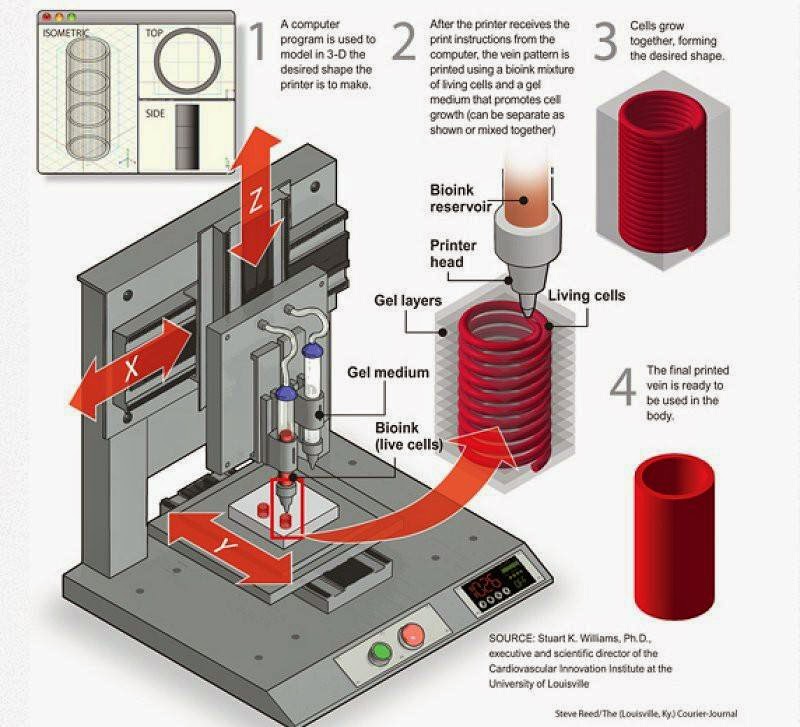
The effects of losing or breaking parts of products or devices can range from the inconvenient to the disastrous.
3D printing will consign the days of having to pay exorbitant repair costs, or else throw away a mostly functioning device, to the past, by enabling consumers to produce replacement and spare parts.
Engineers at Ashley Furniture used 3D printing to replace a vacuum retainer ring for a point-to-point drilling machine. Instead of buying the whole pod for $700, they were able to 3D scan the part to capture the geometry, and print a replacement part for $1.The digital workflow means that costly storage of rarely-ordered replacement parts will no longer be an issue for manufacturers, and consumers will stand a chance of having even their out-of-production components replaced.
Minimizing weight is a primary way in which 3D printing has enabled the aerospace industry to make a considerable saving. The lower volume of components required in a 3D printed construction of a part leads to parts that are lighter overall—this seemingly small change to production positively affects an aircraft’s payload, emissions, and fuel consumption and speed and safety, all the while markedly reducing production waste.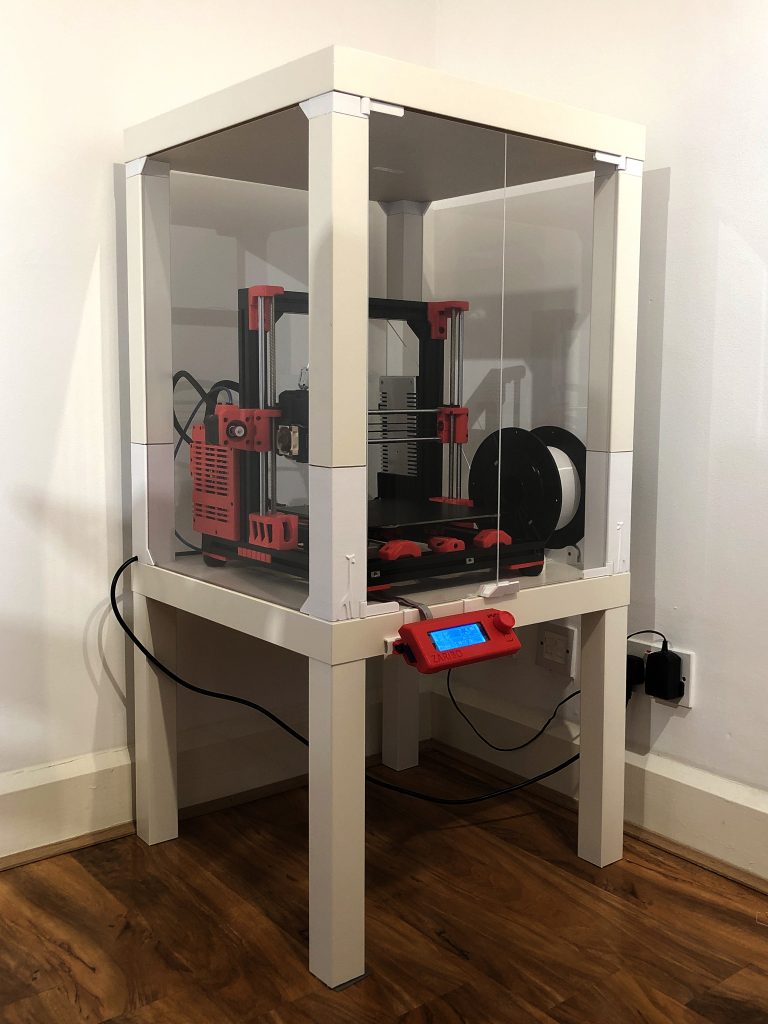 As in numerous other fields, the workflow also allows the production of components simply too complex for traditional methods to handle.
As in numerous other fields, the workflow also allows the production of components simply too complex for traditional methods to handle.
The likes of GE, Boeing, and Airbus have endorsed the value of 3D printing, and are already incorporating thousands of 3D printed parts into their vessels.
SLA 3D Printed Aircraft Engine Presentation Assembly Models
Having to cater to all manner of face shapes, eyewear is also an industry that stands to benefit distinctly from 3D printing’s limitless capacity for customization. New designs intended to optimize both comfort and quality of design can be, as elsewhere, rapidly prototyped using 3D and produced at a lower cost and at greater convenience to the customer.
The results are lighter, more comfortable eyewear, made with minimal waste incurred. Some companies in the field are even using the attributes of 3D printing production to encourage customers to design their own glasses, excellent for generating brand loyalty and empowering consumers.
Some companies in the field are even using the attributes of 3D printing production to encourage customers to design their own glasses, excellent for generating brand loyalty and empowering consumers.
MJF 3D Printed Full-color Nylon Glasses Frame
The sport-footwear industry has long relied on technology to optimize the performance of their products, and with the digital workflow they have more options than ever in customization.
Two limited-edition shoe models with 3D printed midsoles designed by New Balance and 3D printed using Formlabs SLA 3D printing technology.Large brands like New Balance, Adidas, and Nike, having recognized the power of additive manufacture, intend to mass produce custom midsoles made from 3D printed materials. As in other industries, the digital workflow will augment traditional methods of manufacture here—critical, highly-customized components of each product will be entrusted to the 3D printing, and the rest left to traditional means.
In a field with such a passionate consumer-base, 3D printing also stands to empower customers directly. It will enable consumers to design their own shoes, for both personal and widespread consumption. The viral potential of this aspect of 3D printing has already been seized upon by brands.
It will enable consumers to design their own shoes, for both personal and widespread consumption. The viral potential of this aspect of 3D printing has already been seized upon by brands.
First Fully SLS and FDM 3D Printed Sneakers using TPU
One area in which the commercial and artistic potential of 3D printing will likely collide is in the field of fashion and smart clothing. As the pallet of materials and textiles usable in the 3D workflow increases, designers will be afforded an immense range of new possibilities.
Not only can 3D printing technology alter the production of textiles—it will also provide the opportunity to create new textiles that are, for example, bulletproof, fireproof and capable of retaining heat. This particular branch of 3D workflow has yet to be perfected, but in the near future, we will see 3D printed clothing graduate from museums and haute couture to the boutique.
Artists empowered by the workflow have also used 3D smart clothing as “personalized, wearable, data-driven sculpture” with an artistic purpose.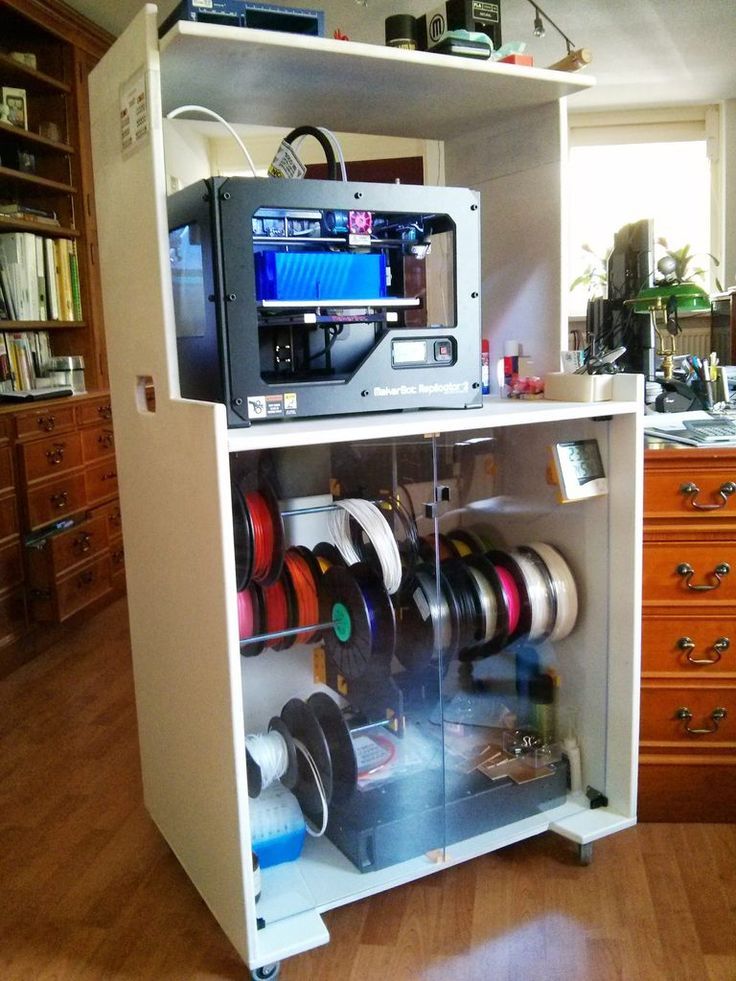
SLA 3D Printed Custom Crystal Fairy Dress with Clear Resin
Model making is another niche practice to which the 3D workflow is ideally suited. Where realistic reproductions were once inordinately expensive or impossible to model, the quality of detailing and finish possible through 3D printing methods has made the production of realistic, detailed miniatures and scale models more affordable and easier.
CAD can make light work of formerly complex modeling challenges, empowering designers to essentially reverse engineer a structure as complex as an engine from 3D scans or SpaceX rockets.
The in-house production aspect of the digital workflow enables a business that revolves around custom modeling to scale in a traditionally niche market. For example, DM-Toys’ extensive integration of desktop 3D printers has enabled them both to disrupt the long-standing European model railway market, and deliver to customers more quickly and more cheaply.
3D printing is ideal to create realistic, detailed miniatures and scale models.
SLA 3D Printed Train and Train Bridge Resin Models for a Railfan
The versatility and vast degree of customization possible through 3D printing means that it’s of great use in the spheres of medicine. We’ve seen it beginning to transform the audiology space already, hearing specialists and ear mold labs has been using the technology to manufacture high volumes of custom ear products like hearing aids, protective plugs and earphone for years.
3D printing makes for an excellent match for audiology, as it offers customization possibilities at no extra costs, which used to be complex and expensive using traditional methods.
As the technology becomes more affordable, we will see more and more consumer applications, like custom earbuds, appear: the process will be as simple as walking into a store, getting your ears scanned, and having your custom earbuds 3D printed.
As with jewelry, the 3D printing can produce quantities of complex designs at a low cost while cutting lead times. It can all be managed from a printer small enough to fit on a desktop. Audiologists are seeing manufacturing costs go down, their need for outsourcing reduced (key for smaller businesses).
It can all be managed from a printer small enough to fit on a desktop. Audiologists are seeing manufacturing costs go down, their need for outsourcing reduced (key for smaller businesses).
Customers will directly feel the benefits, as through extremely precise customization of their 3D printed audio devices they can look forward to new degrees of specialization and comfort in their in-ear technology.
Dentistry has also been one of the most prominent users of 3D printing, desktop 3D printers are an increasingly common sight in dental labs and practices. As matter of fact, the popular clear aligners, thermoformed on 3D printed molds, are possibly the single most successful use of 3D printing we’ve seen to date.
Consistently creating high-quality dental products that are affordable has proved difficult, owing to the uniqueness of each dental case and the number of possibilities for human error. Digital workflows in dentistry bring possibilities for greater consistency, accuracy and precision than before. Intraoral digital impression scanning can provide much better data to technicians, enabling easy creation of repeatable models through 3D printing, and improving efficiency in both the dental practice and the lab.
Digital workflows in dentistry bring possibilities for greater consistency, accuracy and precision than before. Intraoral digital impression scanning can provide much better data to technicians, enabling easy creation of repeatable models through 3D printing, and improving efficiency in both the dental practice and the lab.
Dental 3D printers mostly use resin-based 3D printing processes, like SLA or digital light processing (DLP), to create a variety of indications like surgical guides, dental models, molds for clear aligners, dentures, or castable patterns for crowns and bridges quickly, with enhanced accuracy and lower cost than traditional methods.
The result for the customer is a plethora of dental products that fit better and work better, with higher clinical acceptance by the patient. The time saved by the streamlined workflow leads to better throughput, lower material costs, and better results for the patients.
A selection of dental products manufactured with stereolithography 3D printing technology.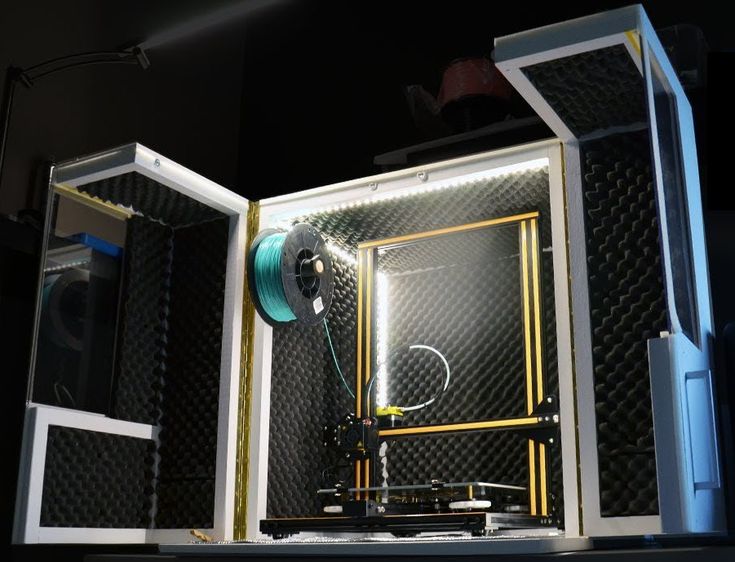
DLP 3D Printed Dental Teeth Model For Display
3D printing’s impact is not limited to improving workflows or enabling rapid prototyping. It can also change lives directly. With 30 million people worldwide in need of artificial limbs and braces, there is hope that 3D printing can provide new solutions where cost and specification have traditionally been hurdles.
There is a global shortage of prosthetics relative to demand, and the time and financial cost required to acquire needed prosthetics can prove prohibitive, especially given the degree of customization involved and the high need for prosthetic supplies in, for example, developing countries. Prostheses and braces not built to specification can end up giving discomfort those they should be assisting and empowering.
3D printing can provide an affordable alternative that, like many related advances in medicine, can provide therapy that is much more closely tailored to a patient’s needs. The affordability and customizability of 3D printing techniques can profoundly alter the quality of life for the better for those suffering from injury or disability, as we saw in this story of a father and son.
SLA 3D Printed Exoskeletal Cast to Heal Broken Bones
3D printing can also help make the difference during key moments in surgery. Doctors can scan the patient before the operation and create custom 3D printed models anatomical models to plan and practice for surgery.
For example, researchers at the University Hospital of Lübeck reduced risks during brain operations by using 3D printed arteries. Elsewhere, healthcare providers have doubled down on 3D printing to provide fast, realistic 3D surgical models.
In surgical cases, 3D printing is able to decisively augment existing physical practices—for instance, the less-precise use of cameras to assess the state of an organ in real time. By combining aspects of the digital workflow with the use of computer-aided engineering and data visualization, doctors were able to create these closely modeled objects, and work with new degrees of accuracy and care at the point of treatment.
3D printing has also made formerly impossible surgeries a reality. Replacing the upper jaw, forming a new skull and replacing cancerous vertebrae, all unthinkable before the advent of advanced 3D imaging and printing, have now been carried out successfully because of it.
Replacing the upper jaw, forming a new skull and replacing cancerous vertebrae, all unthinkable before the advent of advanced 3D imaging and printing, have now been carried out successfully because of it.
PolyJet 3D Printed Tumor Model with Resin for Bowel Cancer Surgery
As much as 3D printing technology has developed in the past few years, there are even more high-impact, and seemingly unlikely, use cases of it currently in development. Printed organs is one of them.
Being able to easily create new organs has for decades been a dream for scientists working in regenerative medicine. While it remains in its early stages, the use of the 3D workflow to produce organic tissue eligible for transplant is bearing early fruit. The likes of Organovo and various other laboratories and startups around the world have made creating liver tissue via 3D printing a research priority.
3D organ creation centers around the practice of bioprinting, a specialist offshoot of 3D printing, which takes cells from donors, turns them into printable bio-ink, and then layers and cultures them into mature tissue ready for organ transplantation.
The potential benefits of being able to use 3D printing technology to provide necessary transplant organs are incalculable. What’s more, they may yet pave the way for even greater strides in regenerative medicine, offering new, safe ways to design and test drugs that could treat organ disease and prevent the need for organ transplants altogether.
As an industry already based on geometric design, prototyping and modeling, architecture stands to gain enormously from advances in 3D printing technology. We’ve seen the digital workflow produce complex architectural scale models in full detail, improving the 3D modeling phase of architectural design.
On top of saving time during model production, the 3D printed models allow architects to anticipate the effects of certain design features with much greater certainty, e.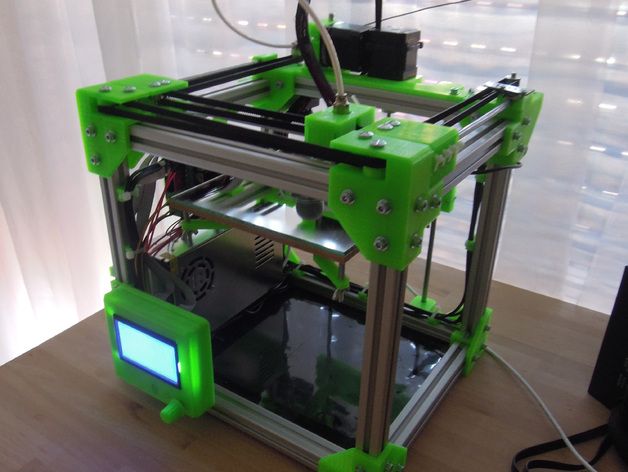 g., by seeing a model produced with a fuller complement of materials, an architect can measure aspects such a light flow through the structure with higher precision.
g., by seeing a model produced with a fuller complement of materials, an architect can measure aspects such a light flow through the structure with higher precision.
The high presentation value of having such an exact model also means that 3D printing can be an acute commercial tool for firms looking to win projects and commissions by showing off the full attributes of their design.
A digital model of an architectural plan, next to its scale model counterpart created with 3D printing.SLA 3D Printed Resin Architectural Models of Detached Houses
The boom in “additive art” has been growing by degrees over the last decade or so, and we’ve seen 3D printing techniques infiltrate various corners of the art world, from consumer artworks to sculpture fit for the Smithsonian.
Using 3D photographic scanning systems to create physical artwork, 3D printing processes can provide a lot of new choices for customers. These developments have given both artists and customers a measure of new creative power, too—anything they can conceive of and design, they can produce, and to highly detailed standards.
SLA 3D Printed and Glued Large Hanging Futuristic Resin Sculpture
3D printing has already been integrated into the production of Hollywood films and is widely used for practical visual effects and costuming.
Whereas the creation of film’s most fantastic creatures once required meticulous handcraft, the increased deadline pressure and time demands of modern moviemaking have made a quicker method of creating practical effects vital. Effects studios like Aaron Sims Creative now use a hybridized approach, practical effect-making enhanced by the digital workflow, to create new opportunities for collaboration and cut lead times on bringing ideas to life.
SLA 3D Printed and Electroplated Phoenix Models as Movie Props
3D printing’s artistic potential is not limited to physical artwork. It also has the power to bring entirely new dimensions to forms like dance and music.
For example, consider the 3D printed, wearable “instruments” developed by Joseph Malloch and Ian Hattwick of McGill University.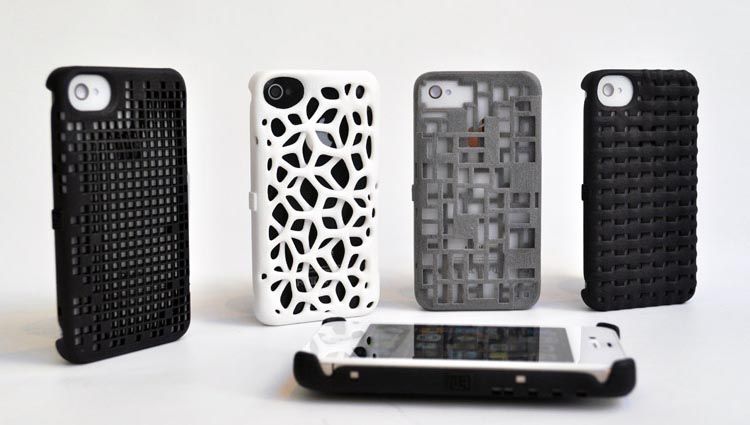 Using advanced sensing technologies, they transform movement, orientation and touch into music.
Using advanced sensing technologies, they transform movement, orientation and touch into music.
3D printing can even disrupt industries that have been in a static paradigm for years or centuries.
For instance, the manufacture of violins had been unchanged for several hundred years—an entirely manual process of master craftsmen, as automated manufacture has proved unable to produce the instrument to the necessary quality of finish.
Owing to the precision of detailing that 3D printing is capable of, we have seen a hard-to-break industry disrupted
As the customization and specification of musical instruments have proven costly in the past, 3D printing capabilities should lead to key changes in the market as new and valuable designs are made possible, potentially paving the way for the creation of entirely new instruments.
3D scanning, CAD, and 3D printing have been used to restore the works of some of history’s most famous artists, returning works by the likes of Michelangelo and da Vinci to their former glory.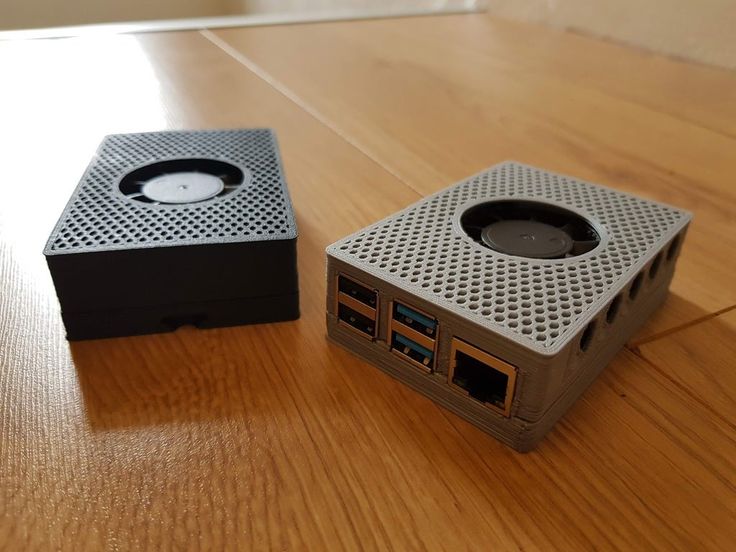
After the present state of a given artwork has been evaluated, the work can be digitally scanned and modeled. The possibility of unintended interpretation is minimized by using existing pieces of a work as the basis for subsequent restoration. Restorers are able to access a wealth of data on potential issues as well as enhancements, followed by documentation, the design of shapes, and restoration.
The reconstructed 3D printed parts on this multi-material reliquary are only visible under UV light.Owing to the complexity of the features involved, and the lack of techniques that could guarantee safe and secure recovery, many previous attempted restorations were abandoned as impossible. Now, with the help of the digital workflow, even incredibly intricate, multi-material restorations are feasible, like this one undertaken in the Museo Tesoro dei Granduchi in Florence.
3D printing has as much potential utility in reconstruction as it does in production. The work of a forensic artist is often made difficult by incomplete evidence.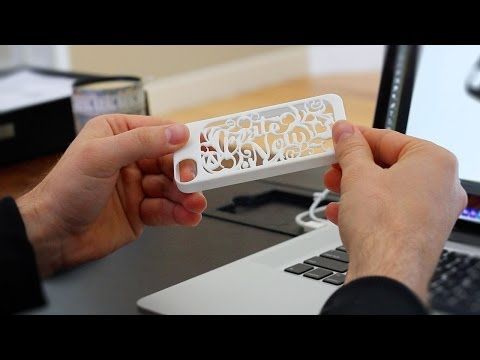 Digital technologies can be of tremendous use in legal investigations and can augment the abilities of forensic artists to reconstruct accurate models of persons of interest or victims.
Digital technologies can be of tremendous use in legal investigations and can augment the abilities of forensic artists to reconstruct accurate models of persons of interest or victims.
The digital workflow here involves turning CT scans into 3D prints to aid in identification. For instance, when investigators find just part of a skull as evidence, a printer can model and replicate the complete sample.
Reconstructions of the appearance of crime victims have already played a key role in attaining justice, proving once again the utility of 3D printing beyond considerations of design and productive efficiency.
Paleontologists will have a field day with 3D printing, as it may help complete dinosaur skeletons by printing elusive missing bones.
The Smithsonian museum staff experimented recently by printing the missing bones of a T. rex exactly to specification. The 3D workflow enabled the team to experiment widely and safely using modeling software, saved time and reduced risk to the integrity of the real skeleton.
SLA 3D Printed 1:35 Livyatan Whale Model
Having seen 3D printing’s capabilities develop rapidly over the past decade, some of the most exciting and unexpected use cases of the workflow are those that, though not immediately feasible, will become a plausible reality soon.
Desktop 3D printing is limited to producing smaller items, while manufacture-scale additive workflow can produce much larger functional components. In the last few years, various initiatives have gotten underway to create houses and larger structures that are entirely the product of 3D printing, opening new frontiers in sustainable living and construction.
The 3D printing technique gives freedom of form to architects, even with previously less malleable building materials like concrete. More broadly speaking, it allows fully sustainable and energy-efficient homes to be built that also meet modern comfort standards. Construction by this means could be entirely waste-free, and provide very low-utility cost.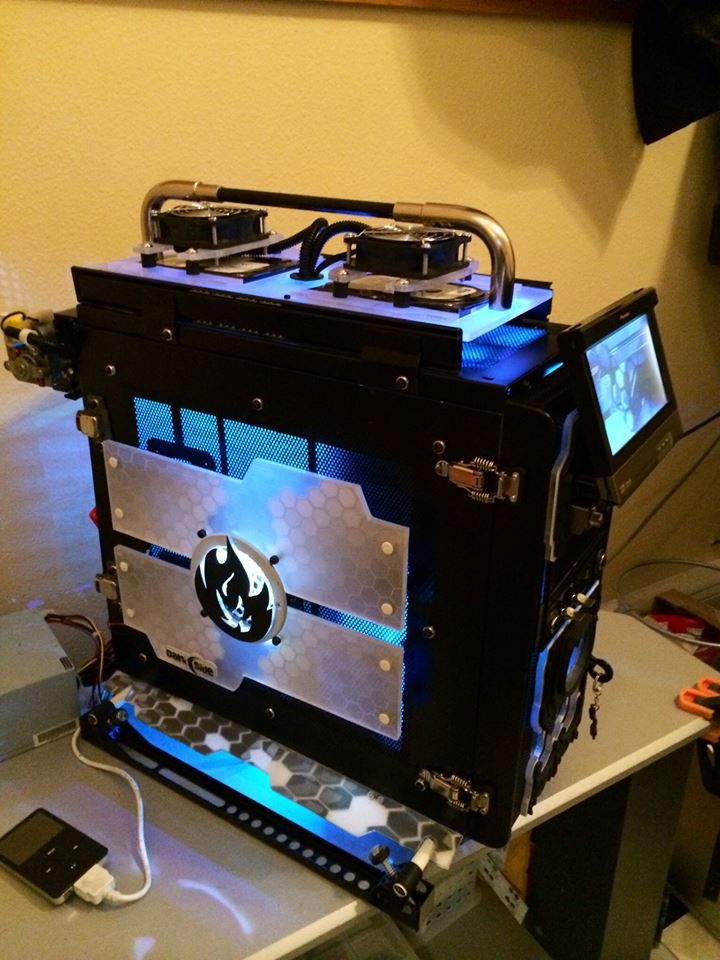
In February of 2019, Texas company Sunconomy announced plans to sell the world’s first fully 3D-printed house. It will look something like this.
MX3D are using the multi-axis digital workflow to print a stainless-steel bridge that will soon be installed across the Oudezijds Achterburgwal canal in Amsterdam. (source: MX3D)The loss of historical artifacts feels devastating because of the sense that recreating them is impossible. The destruction of many Syrian heritage sites, such as the ancient city of Palmyra, at the hands of ISIS seemed to represent a dark and irreversible step backward. Through forward steps in 3D printing, we may soon be able to recreate—and ensure—the glories of the past.
Through the Million Image Database project, a campaign to recreate the damaged ruins of Palmyra with 3D printing is underway. It uses 3D models of the site assembled from photographs to generate recreations that are, in scale and detail, true-to-history. Equally exciting, the same modeling techniques can also be extended to ensure the great masterpieces of artistic history against potential loss.
Going forward, 3D printing will not only have a transformative effect on production and design—it will also be able to play a major role in affairs of international and historical importance.
With one of the highest barriers-to-entry of any industry in the world, space travel may be one of the most surprising areas of 3D printing innovation.
Aerospace startup Relativity has tested the creation of aluminium rocket engines using additive manufacturing. If successful, this application would sharply reduce the costs and practical difficulties of space travel, opening up the field to new business and to a vast potential for growth.
SpaceX’s Crew Dragon spacecraft, fitted with 3D printed SuperDraco engines, first took flight in March 2019. (source: SpaceX)SpaceX’s choice of the 3D printing was taken on account of cost- and waste-cutting aptitudes of the technology, and to preserve flexibility in the production process too. The engine’s combustion chamber, also produced through 3D printing, was proven to have a superior strength, ductility, fracture resistance to conventional materials.
We’ve even seen 3D printing used in space, when NASA used a 3D printer to build a ratchet wrench aboard the International Space Station, the first tool of its kind to be manufactured in space.
Visualizing 3D printing-driven changes in the way things are made does not require the feats of imagination it once did. As workflows have developed over the last several years and gained footholds in various industries, we are beginning to see that revolutionary potential demonstrated.
From dentistry and across healthcare to consumer goods, architecture, and manufacturing, the public is interacting more and more with the end products of 3D printing.
Making sustainable reductions to the waste involved in traditional production, cutting lead times and overheads, and empowering customers by bringing them closer to the products they want—we can only expect the influence of 3D printing to continue expanding.
Source: https://formlabs.com/blog/25-unexpected-3d-printing-use-cases/
what a 3D printer can do
3D printing possibilities
Unfortunately, the current level of awareness in 3D technologies leaves much to be desired. It happens that even with a basic knowledge of 3D printers, the actual application of 3D printing remains incomprehensible to a number of users. To avoid such situations, we have prepared this article and will consider in detail all the possibilities of 3D printing.
It happens that even with a basic knowledge of 3D printers, the actual application of 3D printing remains incomprehensible to a number of users. To avoid such situations, we have prepared this article and will consider in detail all the possibilities of 3D printing.
3D printing application
When it comes to 3D printing applications, it is worth considering not only the existing possibilities, but also the prospects. Already today, the application of 3D printing technology is extremely extensive and does not stop expanding. Of course, in the future we expect a large-scale distribution of additive techniques, but the practical application of 3D printing is available to everyone today. We will not delve into narrowly specific aspects of technology, such as 3D food printing, or bioprinting. Instead, let's talk about how 3D printing technology can be used by ordinary users with desktop 3D printers. nine0005
1. Prototyping
The best way to use 3D printing is for its intended purpose.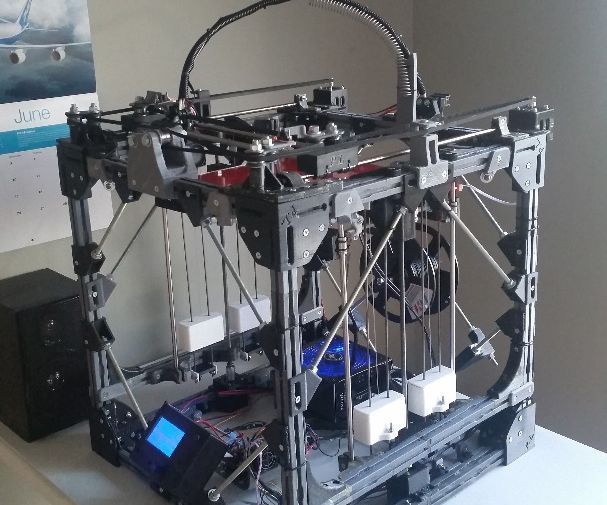 Rapid prototyping is not only the second name of the technique, but also the original goal of its development. Creating prototypes using 3D printing significantly reduces production time and costs. And thanks to the possibilities of 3D modeling, the range of designed parts is practically unlimited. Prototyping allows you to visually assess the possible shortcomings of the product at the design stage and make significant changes to the design of the part even before its final approval. nine0005
Rapid prototyping is not only the second name of the technique, but also the original goal of its development. Creating prototypes using 3D printing significantly reduces production time and costs. And thanks to the possibilities of 3D modeling, the range of designed parts is practically unlimited. Prototyping allows you to visually assess the possible shortcomings of the product at the design stage and make significant changes to the design of the part even before its final approval. nine0005
2. Small-scale production
For small-scale production, 3D printing is a godsend. The properties of many materials allow the production of finished components at minimal cost. Compared to traditional production methods, small-scale production using 3D printing is very profitable from a financial point of view. The manufacture of molds, for example, is a lengthy and costly process. At the same time, injection molding itself takes a lot of time. On a 3D printer, you can print a batch of the necessary products in a matter of hours.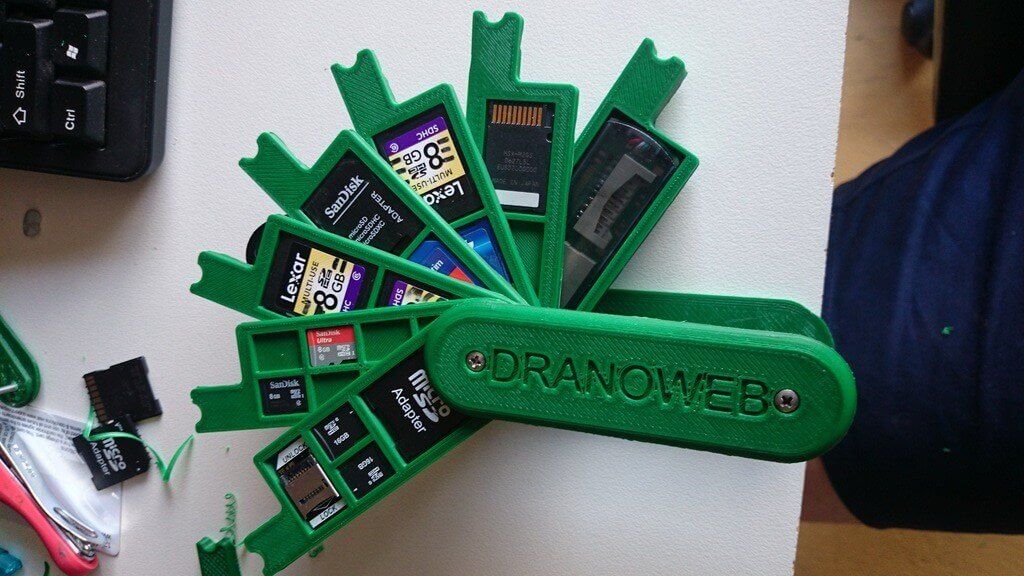 This application of 3D printing is extremely relevant for frequent orders for small batches of parts. nine0005
This application of 3D printing is extremely relevant for frequent orders for small batches of parts. nine0005
3. Repair and restoration
Another application of 3D printing is the repair and restoration of damaged parts. For these purposes, 3D printing is ideal. You can carry out such a procedure both independently, with the appropriate skills and equipment, and in specialized 3D printing services, such as 3DDevice. First, a correct 3D model is built on the basis of the damaged product. 3D scanning can also be used to simplify design. Next, the finished model is sent to print and reproduced on a 3D printer in the required number of copies. Repair and restoration of damaged parts using 3D printing is fast, and the presence of a digital model of the component allows you to reprint it at any time. nine0005
4. Production of functional models and finished components
One of the industrial applications of 3D printing is the production of functional models and finished components.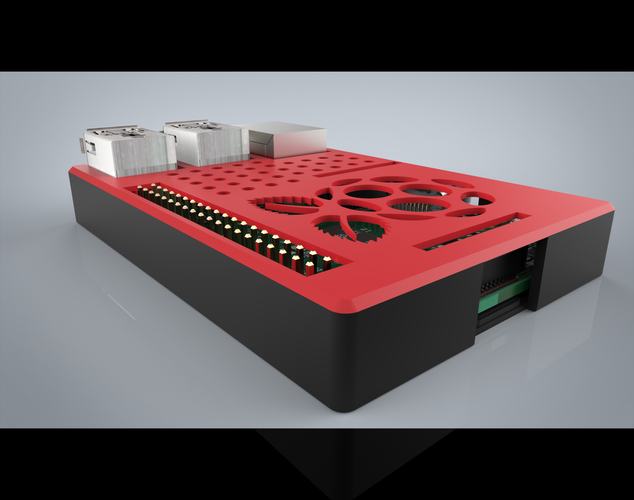 Making products on a 3D printer from a transparent material allows you to see the work of a functional part “from the inside”, which is very useful when developing various engineering samples. In addition, a wide range of different materials for 3D printing turns it into a full-fledged production tool. Industrial 3D printers are gradually becoming a part of every industry, allowing the production of durable metal components. nine0005
Making products on a 3D printer from a transparent material allows you to see the work of a functional part “from the inside”, which is very useful when developing various engineering samples. In addition, a wide range of different materials for 3D printing turns it into a full-fledged production tool. Industrial 3D printers are gradually becoming a part of every industry, allowing the production of durable metal components. nine0005
Other questions and answers about 3D printers and 3D printing:
- Opportunities What is the future of 3D printing?
- Finance How to choose the right 3D printer?
5. Household items
Need an office organizer? Or a knife holder? Any household items can be printed on a 3D printer. The advantage of this application of 3D printing is that there are no restrictions when developing 3D models. That is, if you want to show imagination and create something original - all the cards are in your hands. Thanks to 3D printing, your home can be decorated and made more functional easily and inexpensively. nine0005
Thanks to 3D printing, your home can be decorated and made more functional easily and inexpensively. nine0005
6. Toys and souvenirs
Having a 3D printer makes it very easy to make a child happy – just make cute 3D toys. There are already some pretty interesting projects of collective 3D printed games, and in the future this list will only expand. This application of 3D printing will please not only children, but also enthusiastic collectors, because on a 3D printer you can print figures of any characters and attributes of computer games and films. And color 3D printing will make it possible to produce exclusive full-color souvenirs - miniature figurines of real people. To do this, a digital model of a person is formed on the basis of 3D scanning data. In this case, all textures and color data are preserved. Everyone will definitely like such a gift, because getting a tiny copy of yourself is so unusual. nine0005
7. Design products
For creative people, there is another use for 3D printing. 3D technology in general is a unique opportunity to show your talent in the most unusual way. Artists, sculptors, fashion designers and designers from all over the world use 3D printing to create exclusive pieces of art that would be impossible to produce with standard methods. Such designer pieces impress with their beauty and originality, often fusing digital and traditional art. In addition, 3D printing techniques for clothing and footwear are being actively developed. Some models have even gone on sale, but it's too early to talk about mass production. nine0005
3D technology in general is a unique opportunity to show your talent in the most unusual way. Artists, sculptors, fashion designers and designers from all over the world use 3D printing to create exclusive pieces of art that would be impossible to produce with standard methods. Such designer pieces impress with their beauty and originality, often fusing digital and traditional art. In addition, 3D printing techniques for clothing and footwear are being actively developed. Some models have even gone on sale, but it's too early to talk about mass production. nine0005
8. Capabilities of a 3D printer
We have listed the main capabilities of a 3D printer, but they do not end there. 3D printing finds application in a wide variety of industries. With its help, electronics, various components, food and even living tissues are printed. Of course, this list will be replenished in the future, but already now it impresses with its scale. We hope that we were able to provide information about the existing application of 3D printing in an accessible way.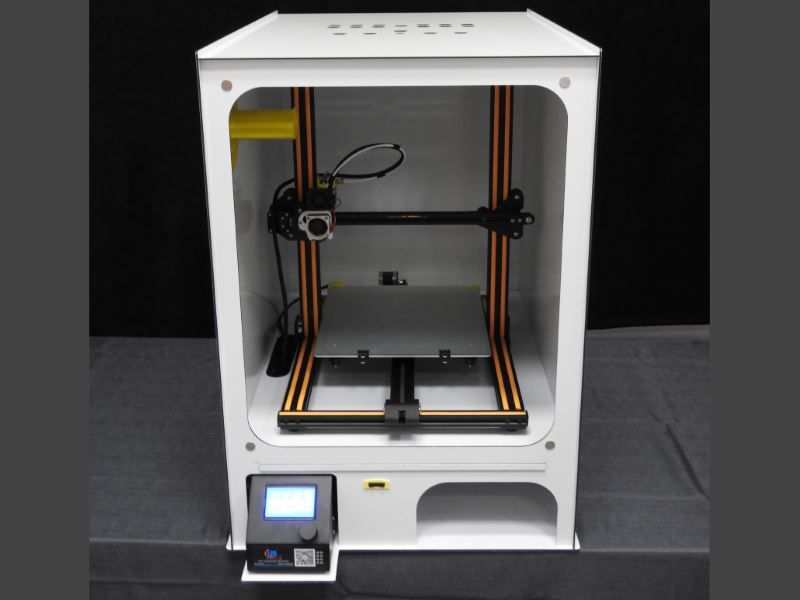 If you have additional questions that we have not covered, write to us by e-mail and we, if necessary, will add your questions! Best regards, 3DDevice team. nine0005
If you have additional questions that we have not covered, write to us by e-mail and we, if necessary, will add your questions! Best regards, 3DDevice team. nine0005
In addition, our company provides 3D printing, 3D scanning and 3D modeling services of any complexity at the best prices on the Ukrainian market. The 3DDevice online store offers a wide range of products (3D printers, 3D scanners) and consumables (plastics and resins). For any questions please email us or call one of these numbers. We look forward to collaborating!
Back to home
examples and perspectives of home, household, educational and commercial use
Creating real objects from digital models seemed to be something unattainable, from the world of fantasy. However, technological progress is moving forward. One of the significant results of its rapid development was 3D printers - devices for three-dimensional modeling. Until recently, installations cost “like a Boeing wing”, and only in the last decade has 3D printing become available to all consumers. The demand for printers has increased due to the development of modern domestic and foreign models of economy class with an intuitive interface. nine0005
The demand for printers has increased due to the development of modern domestic and foreign models of economy class with an intuitive interface. nine0005
Explore the possibilities of additive technologies. This is a good way for printer owners to expand their horizons, and for entrepreneurs to see promising areas in small business.
Contents:
- 3D printer features
- Using 3D printers at home
- In the space industry
- Aviation
- Architecture
- Weapons nine0029 Clothing
- Art
- Medicine
- Surgical planning
- Manufacture of prostheses
- Bioprint
- Dentistry
3D printer features
Three-dimensional printers are equipment for printing a physical object based on its digital 3D model.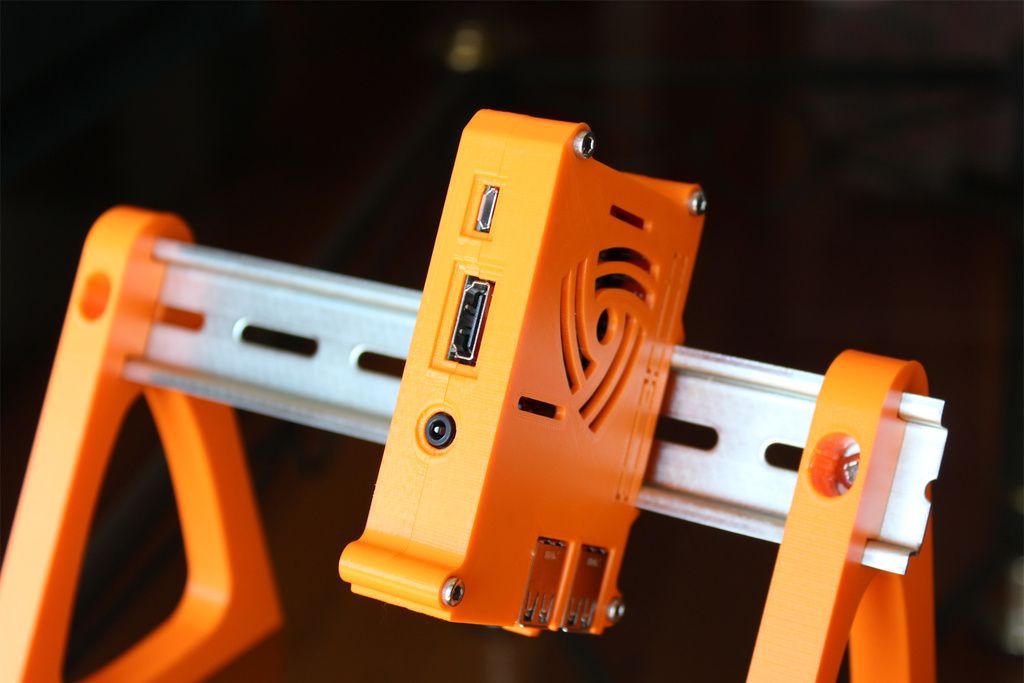 The operation of most devices is based on the layer-by-layer deposition of the material or the gradual solidification of the photopolymer resin. As "consumables" they use all kinds of plastic, metal powder, building mixtures, glass powder and other raw materials. nine0005
The operation of most devices is based on the layer-by-layer deposition of the material or the gradual solidification of the photopolymer resin. As "consumables" they use all kinds of plastic, metal powder, building mixtures, glass powder and other raw materials. nine0005
There are several types of printing technologies that differ in the principle of operation, the properties of materials, the software used:
- powder melting or sintering;
- photopolymerization;
- extrusion;
- laser stereolithography;
- lamination.
Using printers, you can create models of any shape and complexity of execution. 3D printing allows you to reduce the cost of manufactured products and speed up the production process. nine0005
Use of 3D printers at home
3D modeling technology has been used for various purposes in everyday life. It is easy to print a hook for the hallway, a case for a smartphone, a tablet, a toy for a child at home on a printer. To do this, you need to perform a number of tasks:
To do this, you need to perform a number of tasks:
- make a digital model of the object on a computer or download a ready-made template;
- divide the workpiece into many transverse layers using special software; nine0032
- start the device for printing - layer-by-layer build-up of the product.
The printer will become an assistant in the house. Let's be clear: we are surrounded by numerous plastic parts that often fail or get lost. It’s not at all by the way that the handle of the washing machine may break, the blender gear will fall apart, or some fragile button will crack. Using a 3D printer to recreate a broken polymer element is not a problem, but an exciting creative process. nine0005
Devices for 3D modeling allow you to print household items or decor in any room in the house:
- for the kitchen - hooks for towels, napkin holders, a shelf for spices, kitchen utensils;
- in the bathroom - soap dishes, shelves for shampoos, shower gels;
- in the bedroom - shades for lighting fixtures;
- in the office - organizers, pencil holders;
- in the living room - vases, figurines, photo frames, flower pots and much more.
 nine0032
nine0032
If you wish, you can organize "your own business" from home. Using a printer to produce original Christmas and children's toys, souvenirs, bags for phones, tablets for sale is a profitable idea.
In the space industry
Three-dimensional modeling is a promising technology in the aerospace industry. And it is already actively used. Manufacturer SpaceX announced the Dragon v2 spacecraft, its engine is assembled using printed parts. nine0005
3D printing is also used in space. In 2016, NASA sent an industrial printer to the ISS that can operate in a vacuum. With it, astronauts will be able to print the desired item or part, thereby reducing the time to wait for delivery from Earth.
Aviation
Additive technologies have found a place in the aviation industry. Boeing and Lockheed Martin Corporation of America have developed laser-sintered engine parts, load-bearing components and ventilation systems. nine0005
Architectural
The ability to create virtual and then printed three-dimensional models is a breakthrough in the field of architecture and design. With the help of printers, it is easy to make a model of a future building for accurate visualization of its features, presentation to investors or buyers. Layouts have been used in architecture for a long time, but it is printing that leads to the acceleration and simplification of project development.
With the help of printers, it is easy to make a model of a future building for accurate visualization of its features, presentation to investors or buyers. Layouts have been used in architecture for a long time, but it is printing that leads to the acceleration and simplification of project development.
Weapons
Three-dimensional technologies are not always used for good. Weapon printing is a prime example of this. Even budget printers can print a functional plastic gun. From one shot, it will collapse, but even a single pull of the trigger can cost a person his life. nine0005
However, it is believed that people should be able to self-defense. So, employees of Defense Distributed posted 3D models of the Liberator pistol online. They also manufacture spare parts for the Kalashnikov assault rifle and the AR-15 rifle. With them, it is possible to assemble weapons using a printer and available consumables.
Clothes
Polyamide powders are suitable materials for clothing and underwear.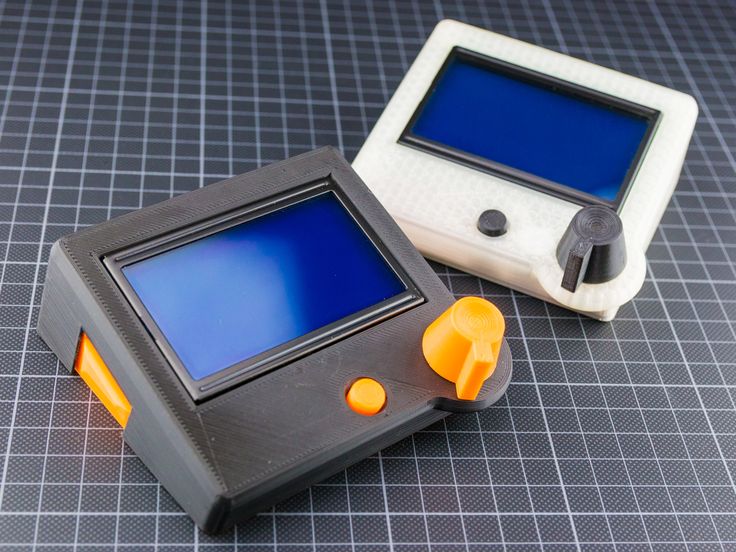 Nylon printed items have an unusual shape, they combine high strength with elasticity. nine0005
Nylon printed items have an unusual shape, they combine high strength with elasticity. nine0005
New York-based design lab Continuum Fashion presented printed clothing at a fashion show. The announced models are non-experimental and can be purchased from the Shapeways website.
Art
Create a wax replica of Donatello's David or Venus de Milo - why not? If desired, copies of famous wax sculptures can be purchased, but they will be expensive, and they are not sold everywhere. A 3D printer will help out art lovers: load a digital model into the device, select the material for printing and start making a replica. A three-dimensional image of the original can be obtained from a regular photo with its subsequent conversion to 3D. Or use a handheld 3D scanner with the ability to capture overall products. nine0005
Medicine
Three-dimensional modeling is used in various medical fields.
Surgical planning
Careful preparation is the key to a successful operation.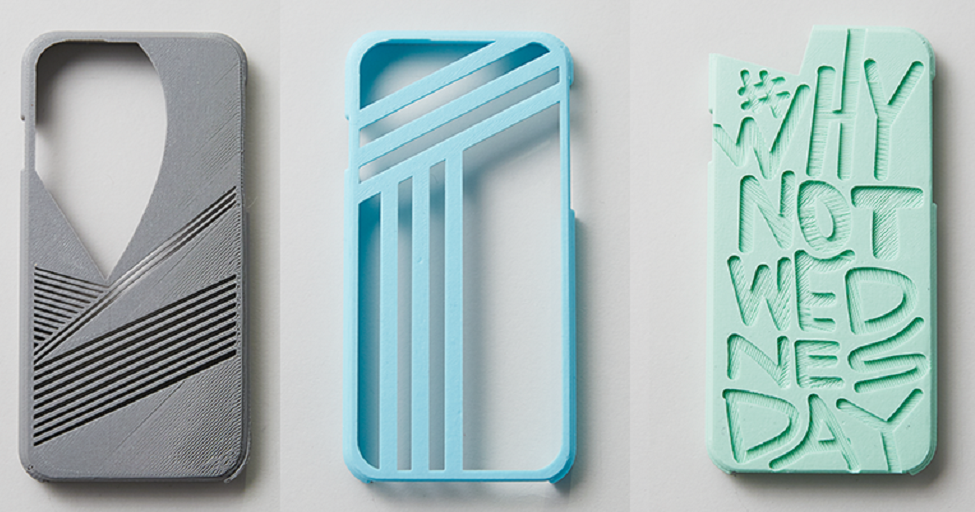 With the help of scanners, an image of the necessary area of the body is obtained, a copy is printed from the virtual model. It makes it easier for surgeons to simulate an operation: try out different scenarios, perform instrument testing, and calculate timing.
With the help of scanners, an image of the necessary area of the body is obtained, a copy is printed from the virtual model. It makes it easier for surgeons to simulate an operation: try out different scenarios, perform instrument testing, and calculate timing.
Manufacture of prostheses
3D printers are used in prosthetics. They allow you to create prostheses that correspond to the anatomical features of the patient. Swedish manufacturer Arcam is developing devices for electron beam melting. Their task is the execution of solid metal structures, including titanium ones. They are used in prosthetics to replace joints, bones or limbs.
Bioprint
Engineers are developing organic imitators that are similar in properties and structure to natural tissues. Printing vessels, muscles or whole organs - all this has become possible. The matter has not yet reached the transplantation of printed organs, but work is underway. In parallel, methods are being developed to restore damaged bones and cartilage.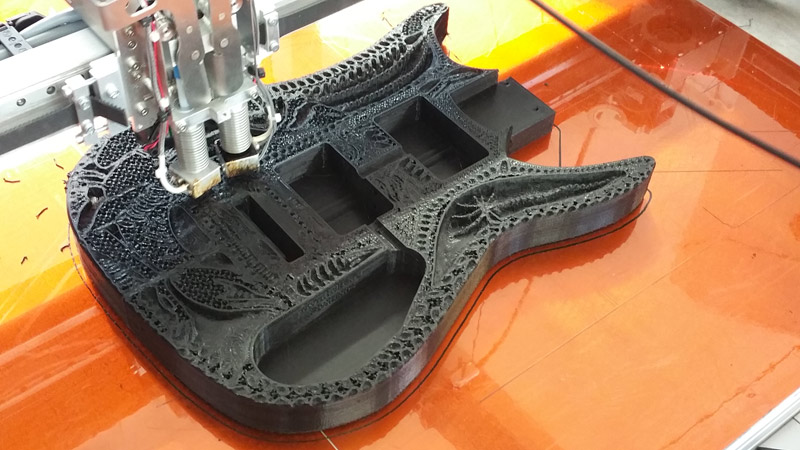 In medicine, “3D biopens” have found application, with which living cells are applied to injured tissues for their healing. nine0005
In medicine, “3D biopens” have found application, with which living cells are applied to injured tissues for their healing. nine0005
Dentistry
Dental braces made of plastic, crowns, dentures, jaw implants - all this can be quickly and profitably produced on a 3D printer. Align Technology engineers have developed a technique in which the oral cavity is scanned and the subsequent manufacture of individual prostheses. Here, liquid resin polymerization technology is used, it provides a high degree of accuracy of finished structures.
Food stuffs
Print minced meat, sugar syrup, melted chocolate - fiction? Not at all! Food printers have ceased to be the prerogative of fairy tales and science fiction films. They are able to produce food of unusual shape.
British company Cadbury uses 3D printers to make molding stencils and candy prototypes that require a complex production line. Italian Barilla uses machines for making pasta, German Biozoon Food Innovations uses dishes for the elderly. nine0005
nine0005
A popular food production device is the Foodini. The printer works with any pasty raw material. Its disadvantage is poor temperature processing of food, but it may soon be eliminated.
Characters
Creating a collection of movie characters, comics, games, figurines of famous personalities has become possible with 3D printers. Want a small replica of the giant robot, Hulk, Iron Man? They can even be printed on a compact desktop printer. Collecting a collection of favorite characters is available to everyone. nine0005
Domestic robots
Arduino, a low-cost board company, has allowed users to design various electronic devices. Many have taken the idea into service for the equipment of the "smart home" system. All you need to do is print the case, install the servo, board and get your home robot.
To help people who do not understand soldering or programming, specialists from the Massachusetts Institute are developing a project to automate the construction of robots. According to the plan, you will need to set the functions of the future device, choose a design - the system itself will send the necessary details for printing. nine0005
According to the plan, you will need to set the functions of the future device, choose a design - the system itself will send the necessary details for printing. nine0005
Musical instruments
Printers can print drums, guitars, flutes, violins. Yes, professional musicians may doubt their quality, since valuable pieces are designed for years, and they serve for decades. The printed tool will not be able to become a worthy alternative. But no one says that it should be all plastic. The printer can be used to print individual parts, such as the neck or soundboard. Due to three-dimensional machines, it will be possible to make tools that are unusual in shape and design. nine0005
Shoes
Printers can print sandals, boots, shoes, slates or individual parts of shoes: insoles, heels, soles. Nylon or other flexible materials (Ninjaflex, FilaFlex) are suitable for this. The advantages of printed shoes are conformity to the anatomical features of the foot, comfort, wear resistance.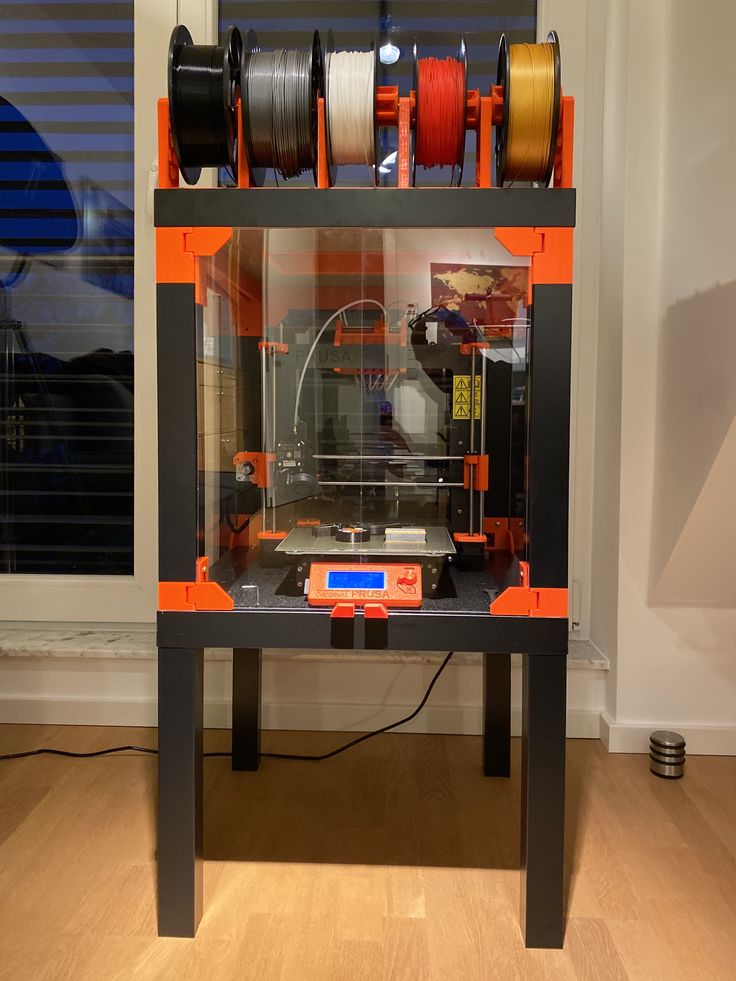 A nice bonus is the possibility of producing products that are unique in appearance with openwork heels that wrap flowers around a thin hairpin.
A nice bonus is the possibility of producing products that are unique in appearance with openwork heels that wrap flowers around a thin hairpin.
Printed footwear has already become the hero of fashion shows, but the time is not far off when it will become available to the mass consumer. nine0005
Medicines
3D printing has proven promising in the pharmaceutical industry for printing drugs. Her virtues:
- up to 50% better product retention than standard production;
- exact dosage of the substance;
- reduction of drug manufacturing time;
- the ability to produce drugs according to an individual prescription.
Organization Organovo is working with new technologies. Engineers use a gel material to precisely connect the components. 3D printers are not suitable for the serial launch of medicines. But they have found use in the manufacture of medicines for individual prescriptions. nine0005
Automotive
Many car mechanisms can be printed.:quality(80)/images.vogel.de/vogelonline/bdb/1696600/1696673/original.jpg) In the world there are already examples of the use of components made on printers. "Formula 1" distinguished itself, it involved printed parts in fireballs. The American Local Motors announced a car at all, the body of which is made only from printed parts.
In the world there are already examples of the use of components made on printers. "Formula 1" distinguished itself, it involved printed parts in fireballs. The American Local Motors announced a car at all, the body of which is made only from printed parts.
So far, the mass production of spare parts for printers is not economically feasible - it is expensive.
Customization and molding
Adding decorative elements to finished products is an original way to update and transform them. Wicker lampshades for sconces, an unusual frame for a bicycle, a car with author's tuning will attract attention, because there are no analogues of our own production.
Furniture
No, we're not just talking about toy items. 3D printers make it possible to produce furniture that is difficult to distinguish from "traditional" products. This result can be achieved through the use of special plastic with the addition of micro-sawdust. For example, Laywoo-D3 has a woody smell.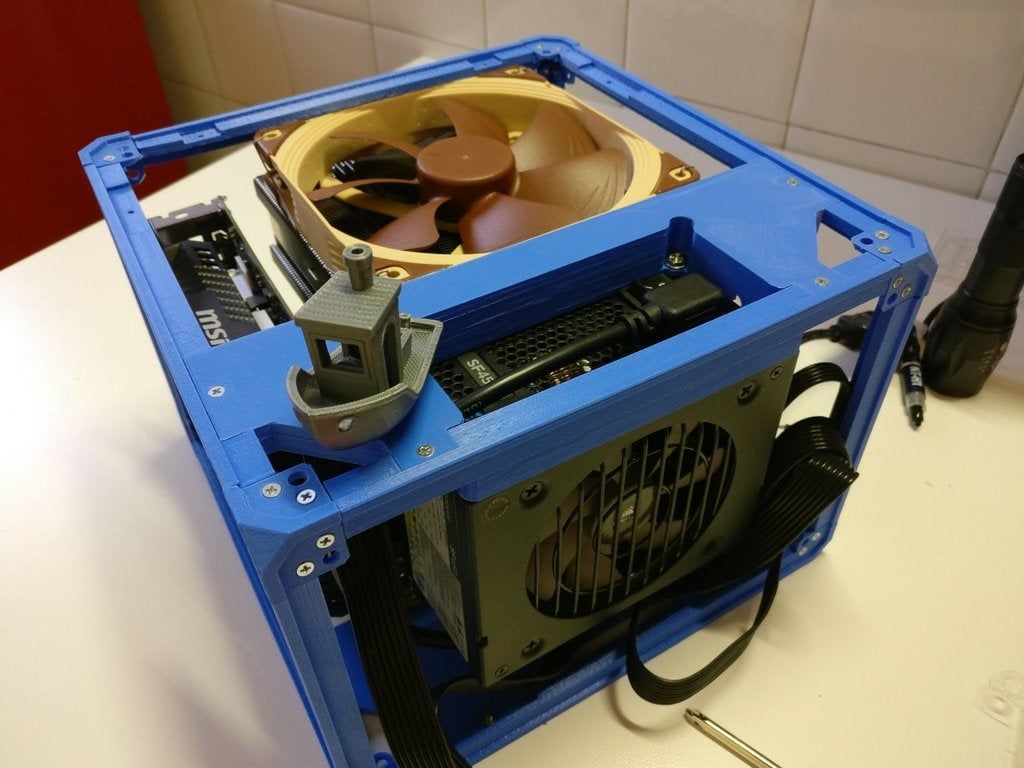 nine0005
nine0005
You can print anything: tables, stools, shelves, chairs, bedside tables. Products are easy to machine, they can be coated with paint, varnished.
There are examples of metal furniture creation in the world. Dutch designer Joris Laarman designed a machine for 3D printing without the use of a laser and vacuum chambers. 3D machines are used to paint with metal through the air - a great option for getting interesting furniture with an elegant wicker design. nine0005
Jewelry industry
3D printing helps to reduce and speed up the production of jewelry at the expense of cheap consumables. With printers, jewelers can redesign jewelry and quickly produce prototypes.
Advantages of 3D technology:
- simplification of the launch of jewelry production;
- obtaining high-quality jewelry: even, smooth, with high detail;
- profitability - elimination of the risks of waste of precious metals. nine0032
The use of 3D printing is relevant for many brands, including Cityscape Rings, Lace, Radian, Ross Lovegrove and others.
Construction
3D printing of buildings has become achievable. For the construction of structures, a mixture is taken, including cement, filler, plasticizer and other additives. The construction composition is squeezed out of the extruder nozzle in layers, repeating the computer model. 3D printers simplify and speed up the construction of structures, lead to a reduction in waste and manual labor costs. nine0005
There is no ideal machine for 3D construction in the world yet, but developments are underway. The Chinese organization Winsun has released a large-sized apparatus (60x100x400cm) for the production of floors, walls with the necessary holes and niches for utilities. Its minus is immobility (the finished building will need to be moved to another place).
Scientists from Spain, on the other hand, are designing small robotic systems. Their principle of operation is based on fastening to finished building elements and erecting the following parts.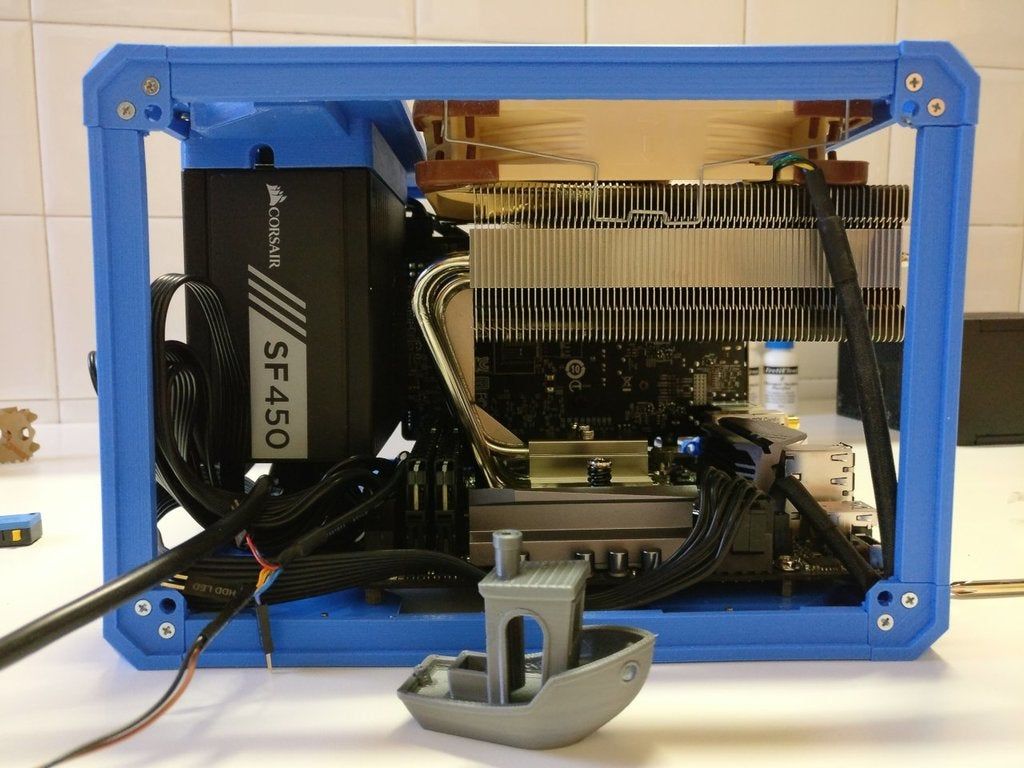 Time will tell which of the construction devices will be more preferable. nine0005
Time will tell which of the construction devices will be more preferable. nine0005
Education
3D printers are available not only for large companies and leading research centers. Prices for economy models start from several thousand, which makes them popular in the field of education. They are purchased for the equipment of schools, secondary special and higher educational institutions.
Advantages of 3D printing in education:
- Visual teaching of the sciences. The teacher will be able to show the section of the engine, human bones or a three-dimensional model of hydrogen - all this will be a good motivation for learning. nine0032
- Development of students' imagination and creativity. 3D modeling develops spatial thinking, helps to visualize the fruits of the imagination.
Summing up
3D printers are the most amazing technology of recent times. Initially, it was available for researchers, scientists, and now an inexpensive machine can be bought for entertainment.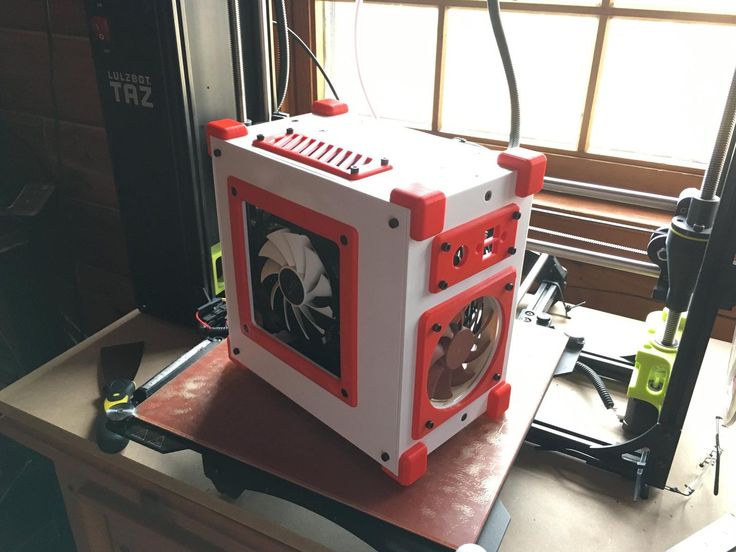 With it, it is possible to create various products and objects, design objects, develop an unusual design for everyday things. In production, the scope of use of devices is amazing: with their help you can print everything from food to architectural structures. Probably, such machines will soon become familiar appliances, like a vacuum cleaner, a refrigerator or a TV. nine0005
With it, it is possible to create various products and objects, design objects, develop an unusual design for everyday things. In production, the scope of use of devices is amazing: with their help you can print everything from food to architectural structures. Probably, such machines will soon become familiar appliances, like a vacuum cleaner, a refrigerator or a TV. nine0005
However, the widespread use of such equipment in production is still not so rosy. 3D modeling has inherent disadvantages that make mass production unprofitable. Not all installations connect different types of plastic, many of them cannot work with different shades and temperatures. Such opportunities are inherent in expensive machines. With their use, the cost of a printed product will be several tens of times higher than the cost of a conventional item. 3D printing is more efficient to use for the production of unique products, where the accuracy of detailing is important. nine0005
Even with the elimination of all the shortcomings, mass 3D printing does not augur well.